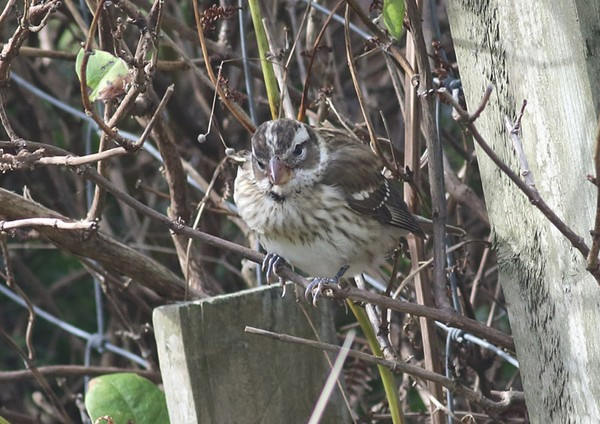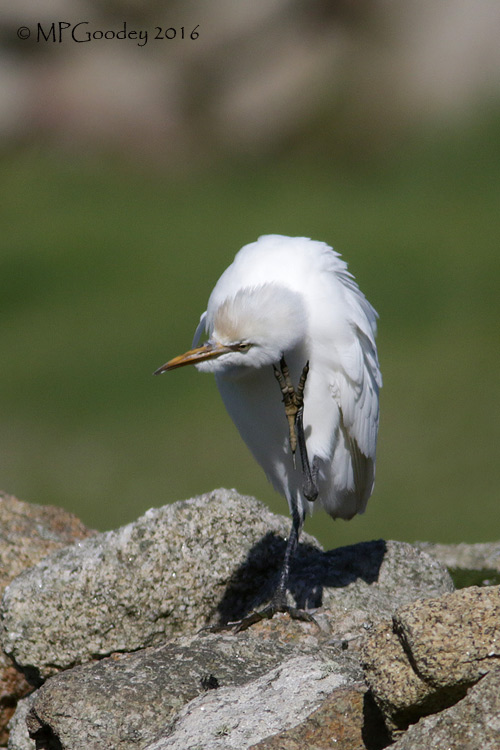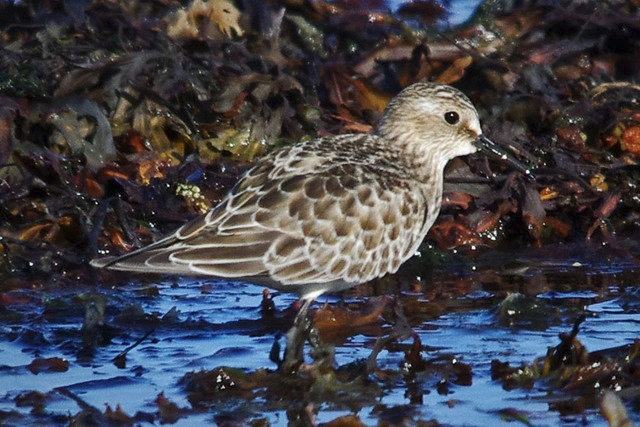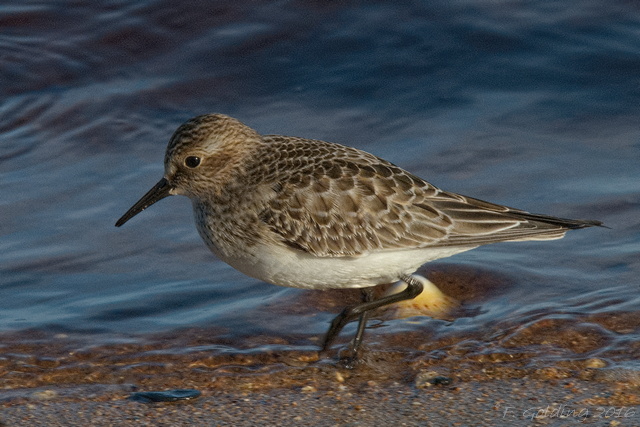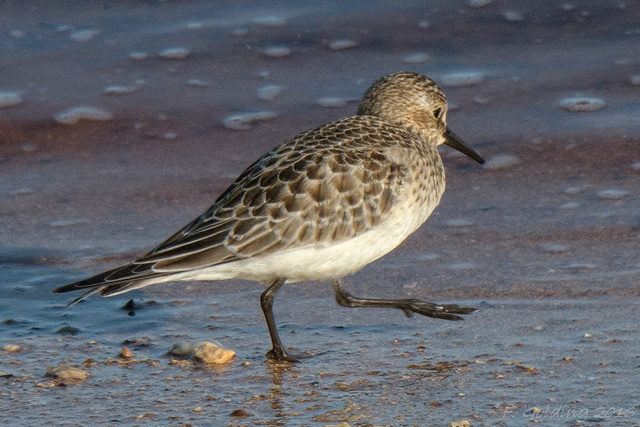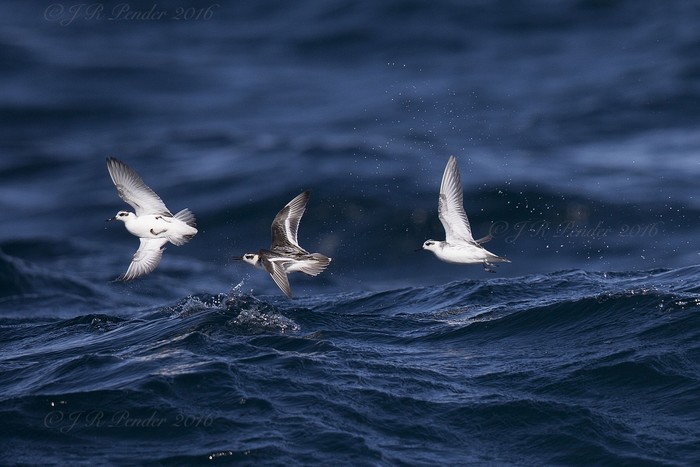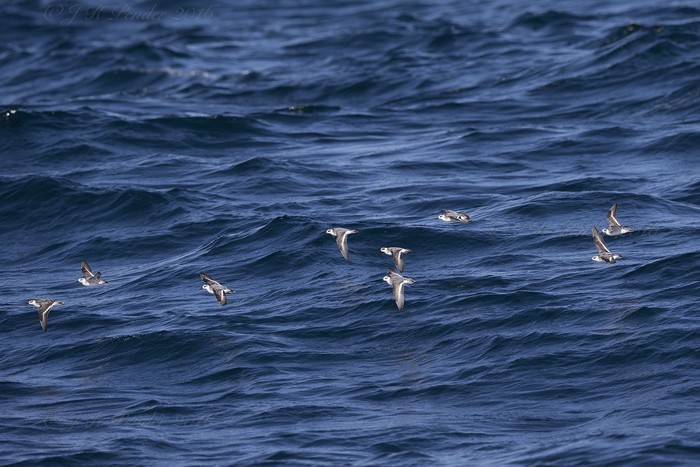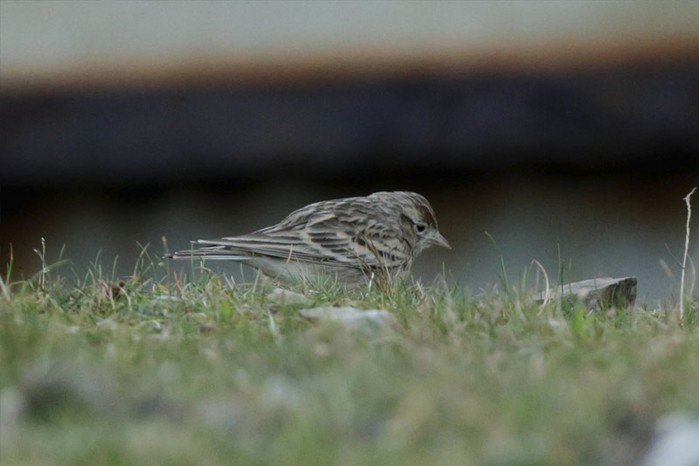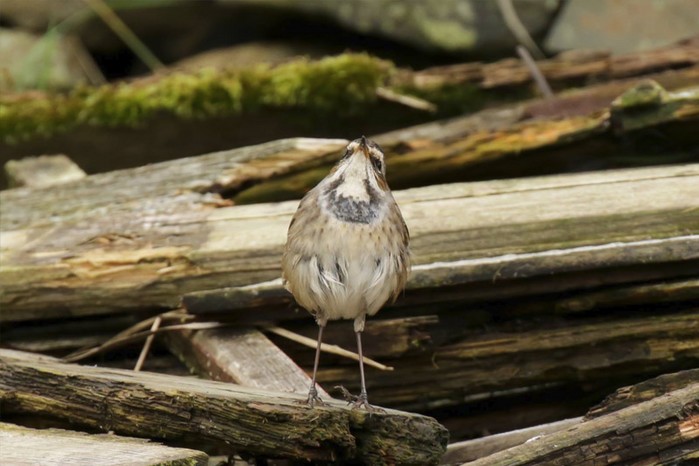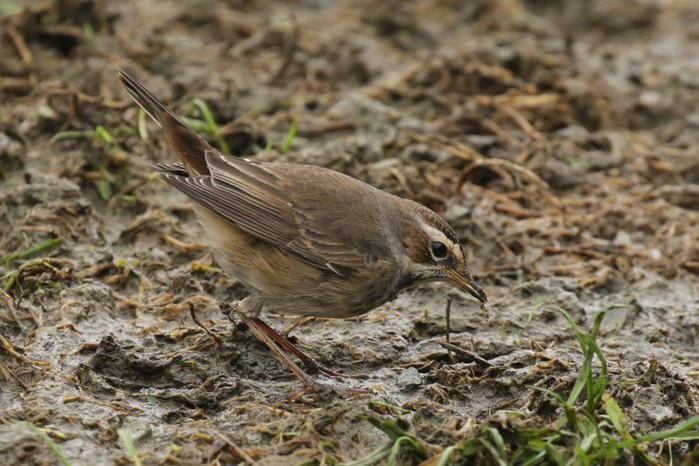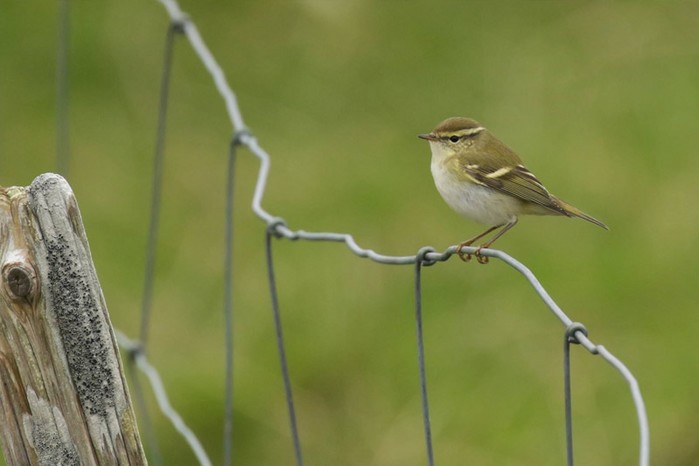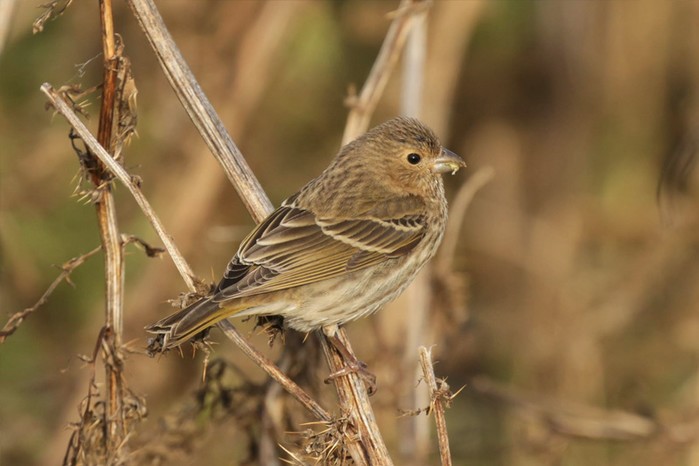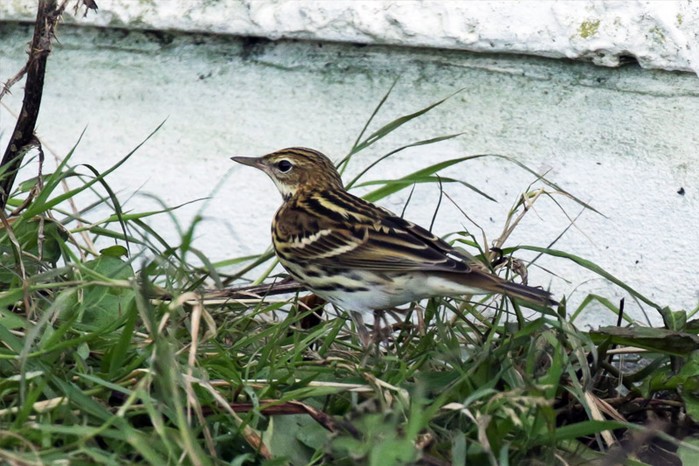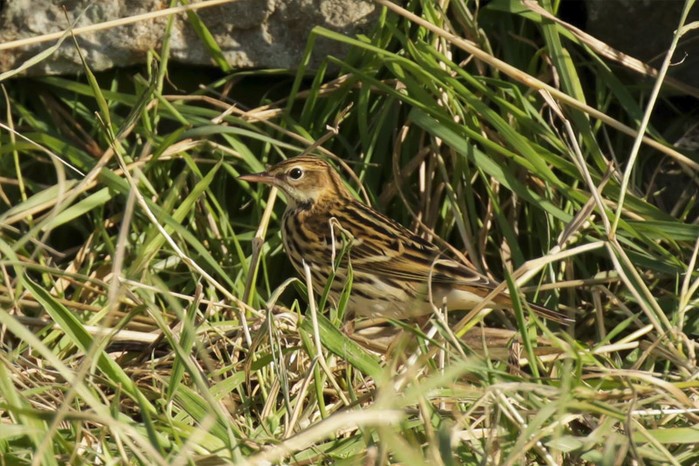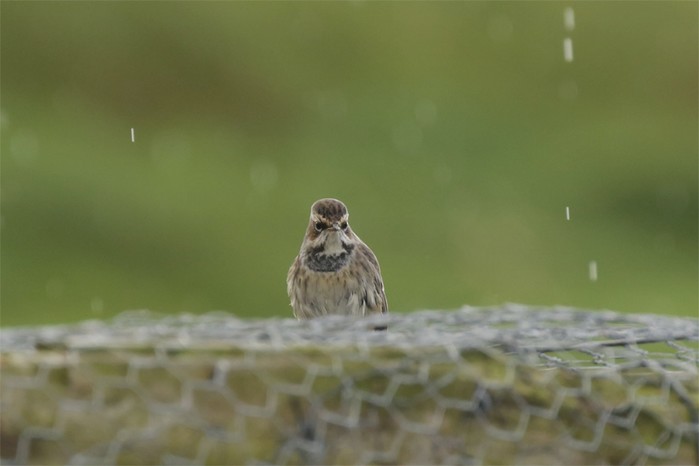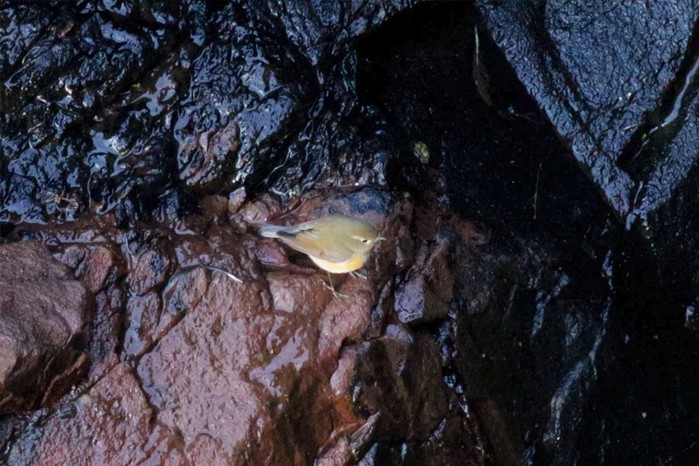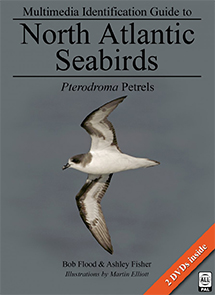Weekly birding round-up: 28 Sept - 4 Oct 2016
Birders of a certain vintage and misty-eyed nostalgics of all ages would have felt this week was a return to the glory days of the mid 1980s as Britain and Ireland was treated to an absolute cornucopia of American loveliness, from a first for Britain through to a healthy variety of shorebirds.
There was truly something for everyone this week, and a sense of well-founded optimism for any birder working a patch anywhere up the western seaboard of Britain and Ireland.
We’re all guilty of watching the weather forecasts at this time of year and speculating what they’re going to deliver (and I’ll have another go at that later on) but all too often promising westerlies translate into not a lot on the ground. Not this week though.
And there were some easterly arrivals too as the week wore on and the wind swung usefully around. This was a classic slice of mid-autumn action – one that will inspire some misty-eyed nostalgia all its own in years to come. Let’s get our teeth into the week that was...
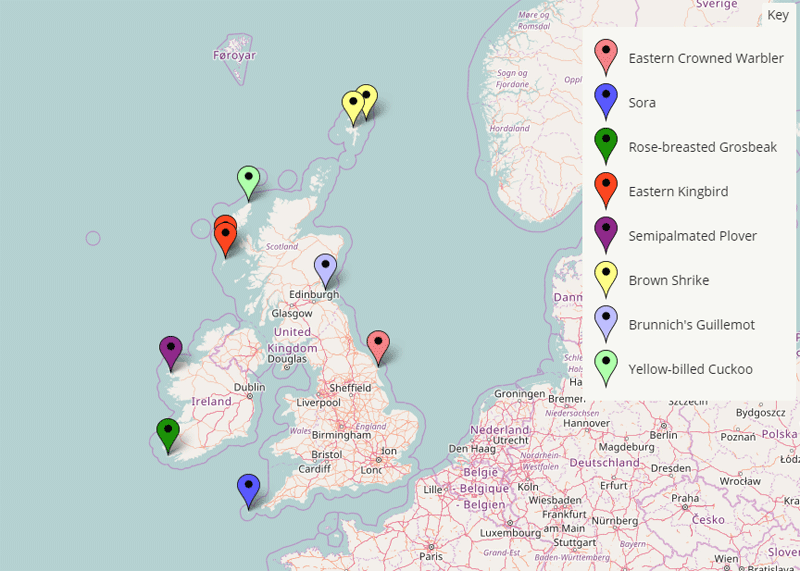
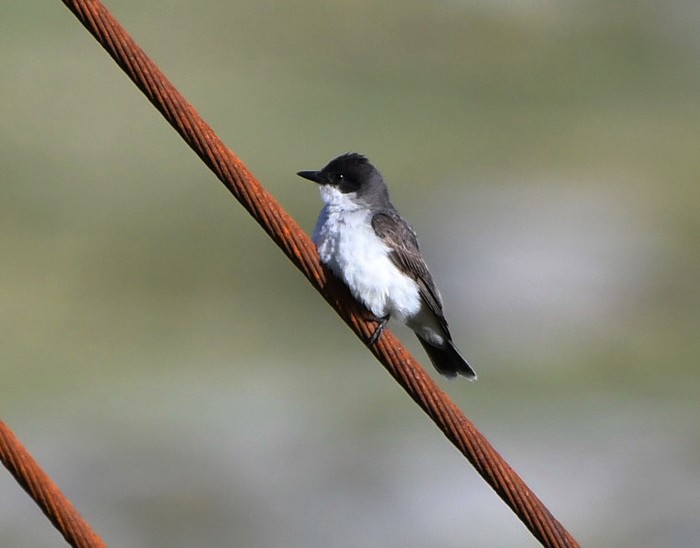
Back in 1997 a book came out that, at first glance, was all about a big year on a budget – Kenn Kaufmann’s page-turner “Kingbird Highway” detailed his attempt to set a new North American yearlist record, and was notable not only for the lengths to which the author went in order to achieve his goal – subsisting on dried cat food at his lowest ebb, and selling blood to finance his twitching habit – but also for his manifest love of birds. It’s a cracking yarn and, if you’ve not read it yet, you really should.
The title came from Kenn’s affection for Western Kingbird - not a difficult bird for him to see in the course of his Big Year, but one which meant a lot to him in his formative years. Much of “Kingbird Highway” is given to his pursuit of rare vagrant birds, and that brings us neatly back to Britain and Ireland to where Eastern Kingbirds are very much top drawer rarities.
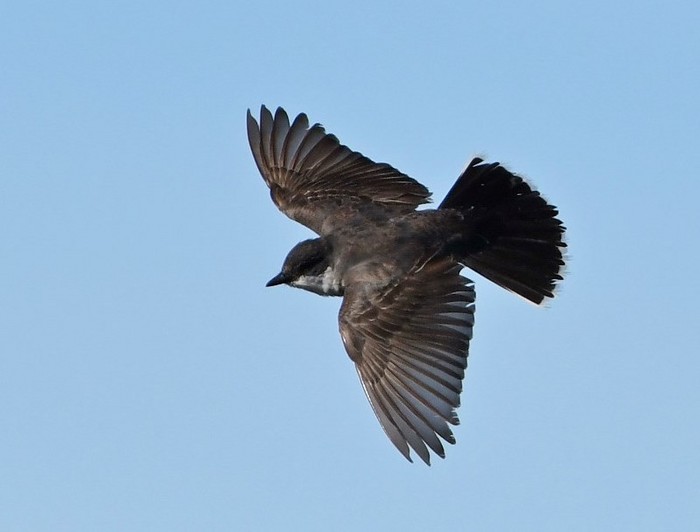
For decades the species, on this side of the Atlantic, was an oft-mooted potential vagrant. Yet it never appeared... until 5th October 2012, when one was seen all too briefly in Co.Galway on Inishmore. Frustratingly gone the next day, the Fates dangled the prospect of British and Irish listers catching up with another the very next year – again in Co.Galway, but mischievously once more it was present for just one day on 24th September 2013 on Inishbofin. And then... nothing.
That changed this week in the dying hours of 29th when an absolutely belting Eastern Kingbird was unearthed on Barra (Western Isles) – on a day when they’d already notched up American Golden Plover and Barred Warbler I’m guessing they were already feeling they’d done pretty well for themselves. But with the sorts of westerlies that had been hitting the west coast one would have been forgiven for dreaming a little bigger than an American Goldie. Bigger doesn’t come much better than a first for Britain...
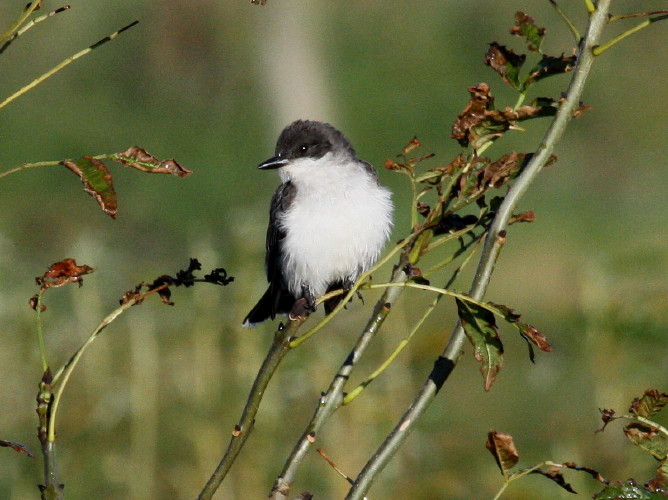
With the ferries into Barra suffering disruption after the Uig-Lochmaddy Cal-Mac ferry accidentally kissed the pier, and only limited capacity on the beach-landing Loganair flights, this was to be a twitch for the particularly determined amongst us. Happily third time lucky where the species was concerned in Britain and Ireland, this individual at least didn’t do a flit overnight. And indeed, it was still present on 30th allowing a reasonable chance for fast-moving birders to connect with it.
Of course, this was an Eastern Kingbird and things were never going to be that simple. Mid afternoon on 30th and it took off high to the north-east. Game over, surely...
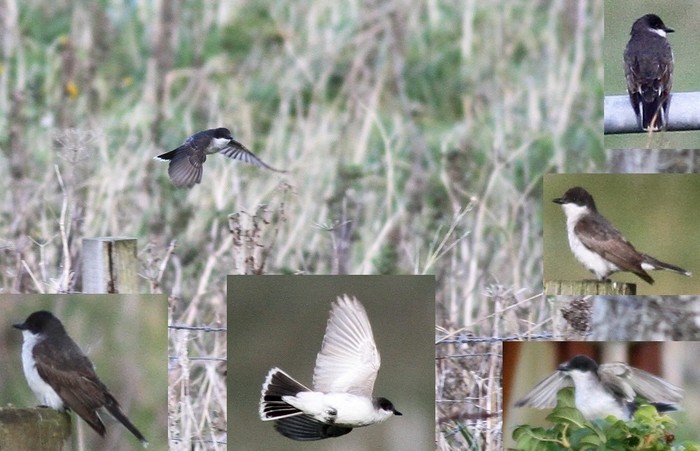
...or maybe not. Two days later in the morning of Sunday 2nd there it was again, showing well not a million miles away on South Uist at Bornish. But after lunchtime? Nothing. Gone again, leaving fond memories for a few in its wake.
Had this turned up in a previous decade, you’d have maybe expected it to be on Scilly. But the times they are a-changing...
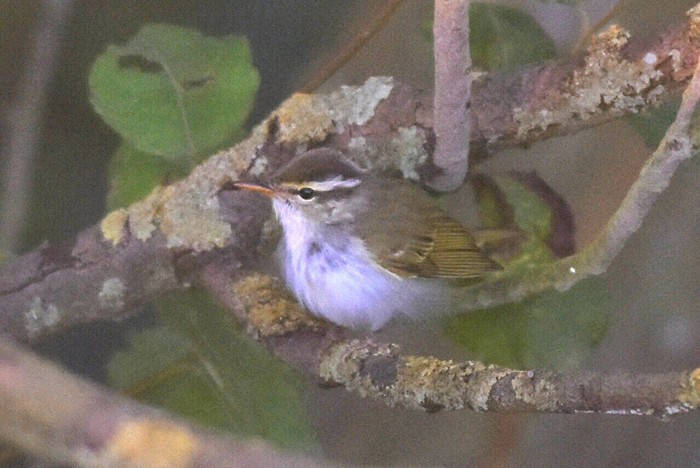
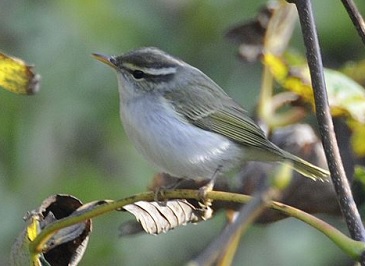
British records: 3. Irish Records:0.
2014: 30 Oct - 01 Nov, Cleveland, Brotton
2011: 30 Oct, Hertfordshire, Hilfield Park
2009: 22 Oct - 24 Oct, Co.Durham, Trwo Quarry
A week that started with a blast from the west concluded in the late afternoon of 4th October with a screamer from the east. Yes, we’ve had a handful of Eastern Crowned Warblers since the first in 2009, but there’s still no denying their absolutely mesmeric star quality.
Initially reported as an Arctic Warbler at Bempton Cliffs RSPB, the true identity was shortly resolved making this only Britain’s 4th record of this outrageous eastern warbler – though with the first only in 2009 there’s a definite feeling that more are on the cards – and with the easterlies forecast for the coming week, it may well be that we’re on for our first year with more than one arrival.
There’s an understandably eastern bias to where all of our Eastern Crowned Warblers have been to date –and including this latest record there’s a distinct north-eastern England flavour to 75% of the records. How long until the well-watched counties of Norfolk or Shetland get in on the act?,
No sooner had the new week dawned than those frisky westerlies that swept us into it had delivered on Lewis (Western Isles) with a gorgeous Yellow-billed Cuckoo found at South Dell on 28th. Initial reports were of it showing well, too often in the past a Coccyzus euphemism for ‘wing-drooping moribund’ – and while it wasn’t actually seen to fall off its perch in the course of Wednesday, nor was it anywhere to be seen the following day. Pretty much par for the course for the species in a Scottish context...
True to autumnal form for North American cuckoos, the Western Isles’ only previous record of the species was one found dead on South Uist at Kilaulay on 4th November 2010, so an extant version in the same year as the Western Isles’s long-staying spring Black-billed Cuckoo, present at Bayhead on North Uist from 22nd-31st May 2016, completes a rather brilliant, Scilly-esque double for the archipelago.
(I’m told the finder had been denying himself chocolate until he found a decent bird this autumn – which to this Mars Bar fuelled birder sounds like a harsh, if effective, incentivising scheme. Word has it that he celebrated the find with three slabs of indecently rich millionaire’s shortbread. This could be the way ahead for us all...)
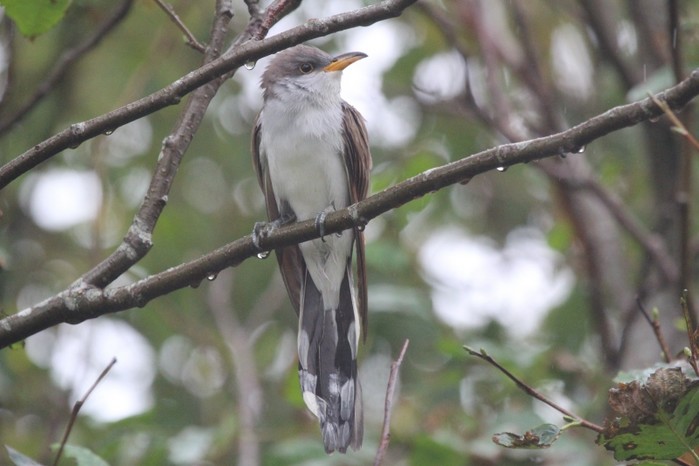
Nationally it’s the southwest that dominates past records, but with a run of Coccyzus cuckoos from northern and western Scotland in the past decade it seems as if the pendulum, in common with recent records of Catharus thrushes, may be swinging northwards where these delicate cuckoos are concerned:
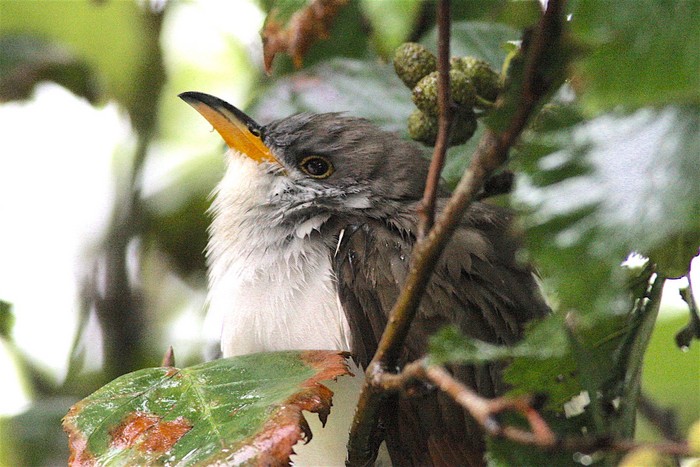
2009 25 Sep - Yellow-billed Cuckoo, Mainland (Orkney)
2009 4 Oct - Yellow-billed Cuckoo, Almondbank (Perth & Kinross), dead
2010 4 Nov - Yellow-billed Cuckoo, South Uist (Western Isles), dead
2014 23 Oct - Black-billed Cuckoo, North Ronaldsay (Orkney)
2016 22 - 31 May - Black-billed Cuckoo, North Uist (Western Isles).
Which just leaves me wondering when Shetland’s next record of either will arrive, and whether it’ll cling onto a vital spark long enough for anyone to see it. We really are very short on caterpillars here...
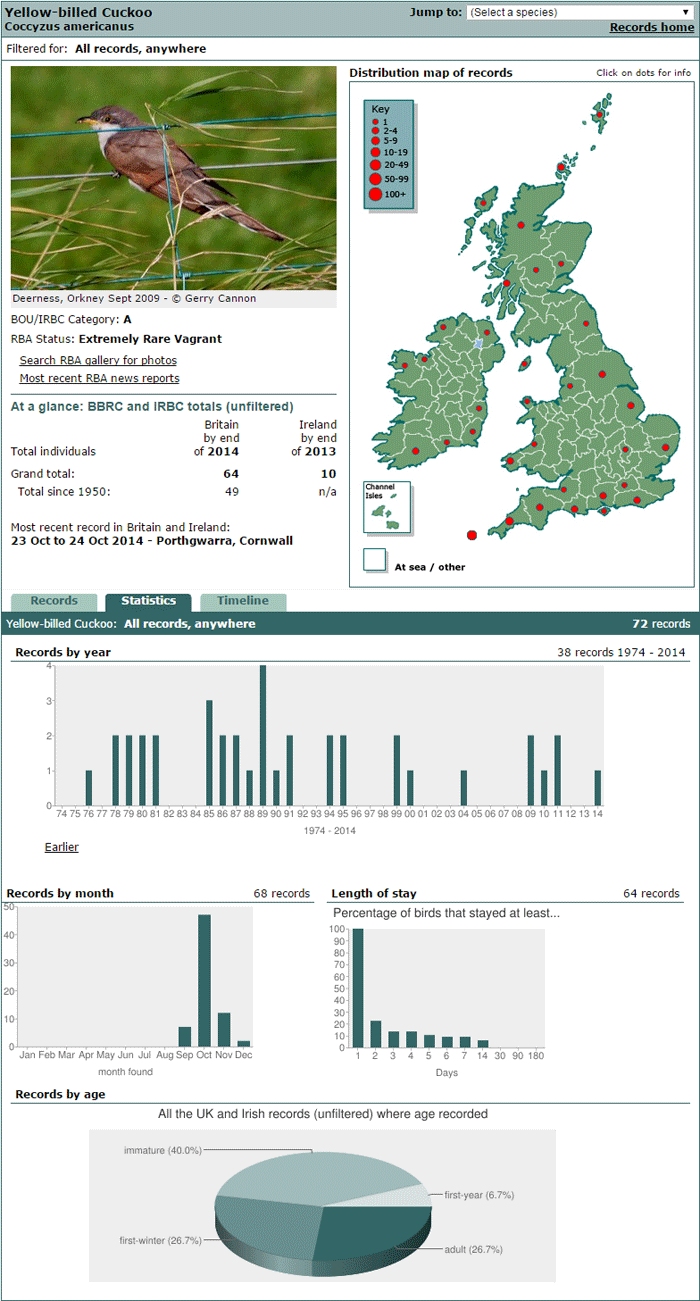
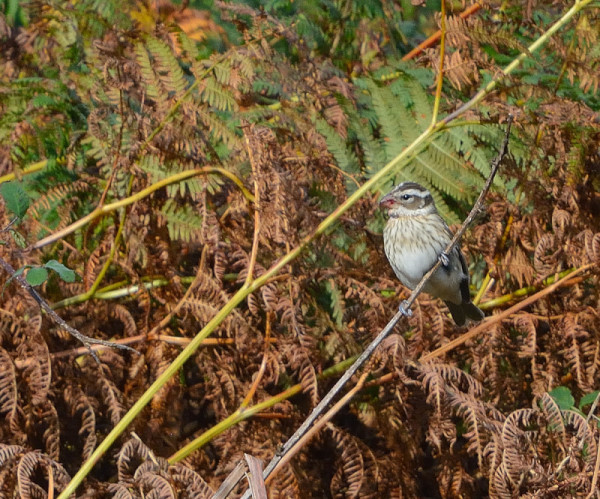
While we’re on the subject of American species (or their near relatives) that have already put in unexpected spring appearances in the region earlier this year, that brings us neatly on to our next headline bird – a Rose-breasted Grosbeak seen briefly in the morning of 29th September at Garinish Point (Co.Cork).
Taking a leaf from the Kingbird’s book this too appeared to do a flit, vanishing for a while before being refound on 30th; and obligingly, this one at least then stayed put until 3rd.
Time was when this species seemed like an autumn staple, at least down in the southwest and in Ireland. The halcyon days for American passerine vagrancy were the 1980s, and that decade delivered no fewer than 13 records of Rose-breasted Grosbeak - half of all accepted records to the end of 2014. No fewer than six were seen in the glorious autumn of 1986 alone...
Everything slowed down in the 90s and the 00s – less than half the 80s largesse being seen in each respective decade. A record from Yorkshire at Bridlington in early November 1991 was the first hint of a new northerly bias – and if we include the stunning male found by Lynn Goodlad in her Burra (Shetland) garden earlier this year then four of the past eight records have been from Scotland. That takes us back to 2007 and Scotland’s first record on 8th October on Barra (Western Isles). American cuckoos, thrushes, grosbeaks... there’s a definite shift northwards lately.
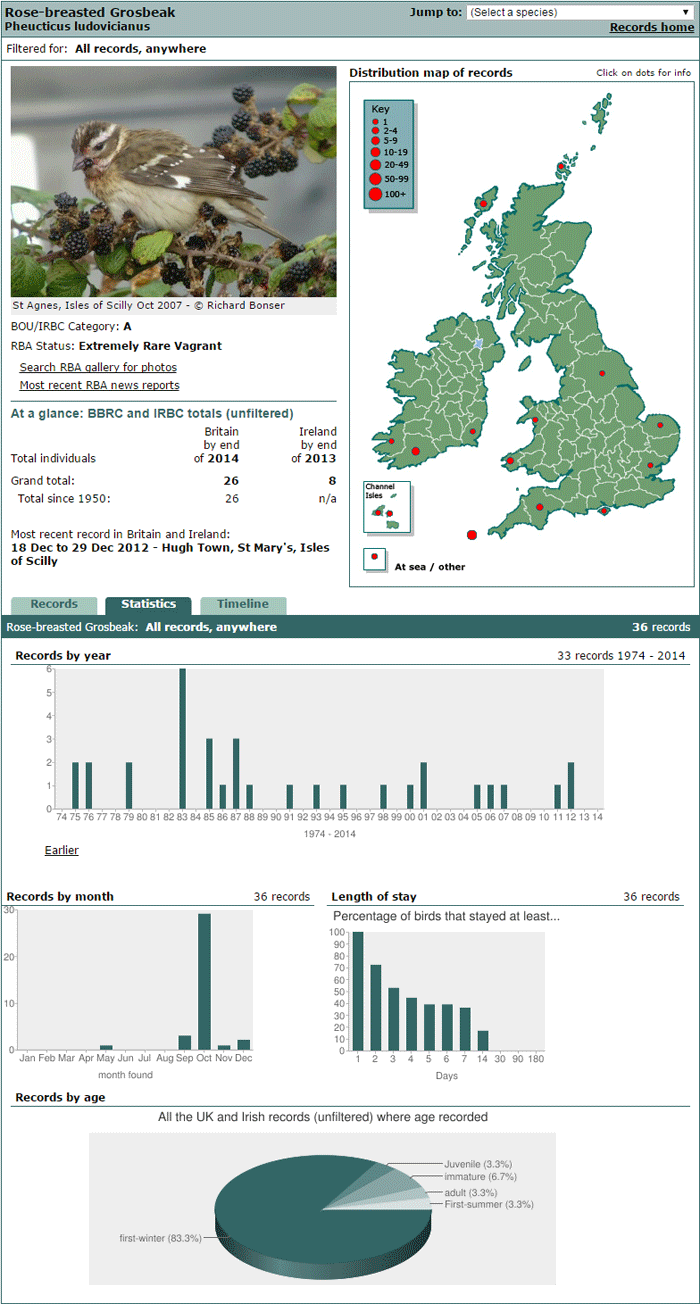
Prior to this year there were just six accepted records of Semipalmated Plover, that diminutive study in American shorebird loveliness. From the very first in 1978 on Scilly there had been a further three British and two Irish records to the end of 2013.
Step forward this summer, and Ireland upped the ante - with a first-summer individual at Tacumshin (Co.Wexford) on 11th May – 9th June and what we’re assuming was a different bird a little later in the summer – an adult again at Tacumshin on 26th July 2016.
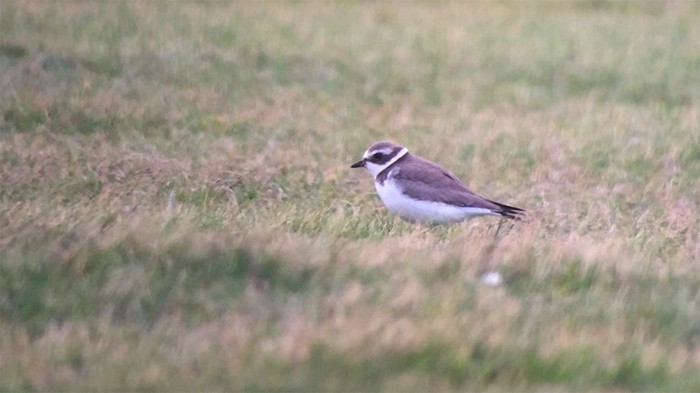
So far so good, with what would be Ireland’s third and fourth overall records – and to that we must add this week a third record for Ireland this year alone with the discovery on 2nd October of a juvenile Semipalmated Plover on Achill Island (Co.Mayo). The highlight of a strong week’s showing of shorebirds, it was still present on 3rd and was in good company with a American Golden Plover also present on Achill on 2nd.
One can never quite shake the nagging feeling that these plovers aren’t being overlooked in Britain and Ireland. Perhaps three in the course of this year alone is merely coincidental – or perhaps we’re all starting to look that little bit harder at Ringed Plovers.
I have a bit of a soft spot for Soras - they not only have some serious chutzpah in the flesh, but one on Scilly in 1991 was the very first lifer I saw when I spent my first autumn week there as a wide-eyed youngster, proud bearer of a battered old pair of Optolyths, a knackered, sticker-festooned Bushnell scope and an unfortunate Madchester haircut. That bird had initially been reported as a Spotted Crake - and history repeated itself on Scilly this week with a report of the latter on Tresco on 2nd rapidly evolving into Scilly’s latest record of Sora.
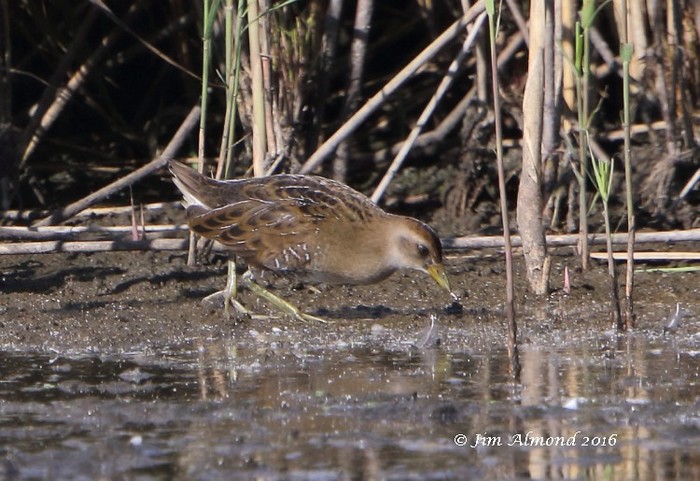
Of the previous 20 accepted records of the species Scilly has the lion’s share – this latest bird being the 8th for the islands since the first in 1973 – this latter bird being the first for Britain in the modern era. They’re more or less biennial then and, happily where Scilly is concerned, they tend to stick around for days if not weeks. Birders making a Scilly pilgrimage this October will certainly be hoping this latest Sora has read the script and plays its part. At the close of this week it was still present on 4th, so the signs are good for the time being.
Shetland has yet to properly roar this autumn, though with some six weeks of autumn proper yet to come there’s plenty of time yet – and Fair Isle provided a timely reminder of what’s possible during a stellar day on 2nd, more of which in due course. This said, the Out Skerries faithful produced a bird at the very cusp of this week that, not so very long ago, would have seen planes being chartered.
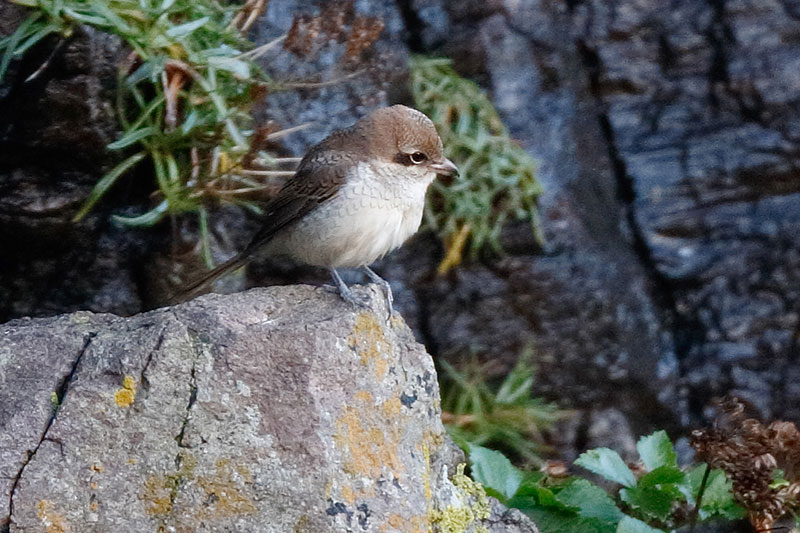
If I look out of my kitchen window I can see the Out Skerries on the near horizon. Closer still are the fences around my croft where back in 2004 an adult male Brown Shrike spent a few days flirting with birders who’d come from all over the UK to see it. The first-winter bird on Out Skerries this week won’t have generated such a fevered response (that’s the preserve of the likes of Eastern Kingbird nowadays) but that’s not to say it isn’t still an absolutely awesome bird and a superb find. This one remained until 30th.
They’ve become a little more regular since our bird in 2004, with 17 British records to the end of 2014 including the overwintering individual in 2009 at Staines Moor (Surrey) that gave every man and his dog a chance to add the species to their list should they so choose. Still, I’d happily see one any day of the week – and while a day-trip to Skerries might have made Shetland’s visiting birders blanch this week, they were given a much more accessible bird to see on 30th when another first-winter individual was identified in Aith on the Shetland mainland.
It’s already been noted that the Brunnich’s Guillemot found last week in Fife at Anstruther harbour was an exceptional record: not only a highly unusual time of the year for one to occur in Britain, but also (for the species) unusually alive – they have a tragic habit of being picked up as tideline corpses, after all.
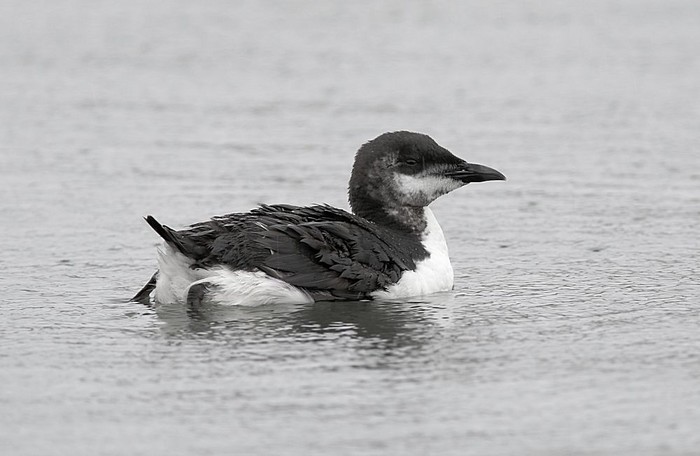
While this latest individual saw the new week in at Anstruther, all was not quite as well as it might have been with it – found dead freshly dead on the morning of 30th, that’s the end of this particular bird’s journey.
I’ve been away from RBA Towers for a few months chasing orchids and, as we come to the end of this week’s headlines, I now fully appreciate what a crazy, crazy summer it’s been. The best of this week’s rest is simply insane. I’ve even seen one of them...
...and we’ll start with that bird: still kicking around Cornwall, the armchair-sized Dalmatian Pelican continues to attract a steady stream of admirers. Present early this week on the Camel Estuary and latterly further east in Devon, it’s an incongruous but magnificent beast.
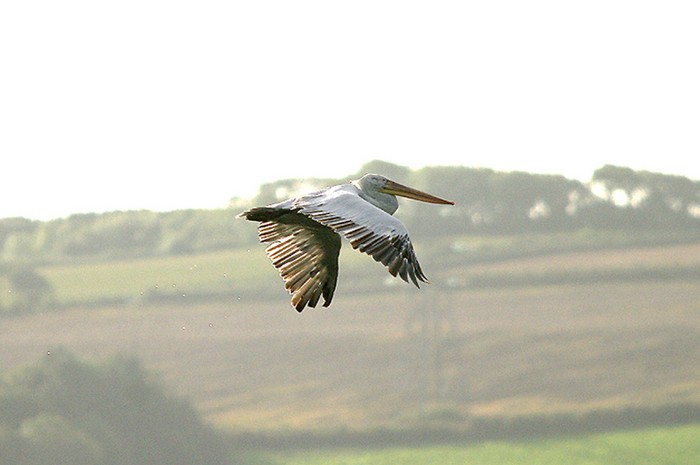
More petite but no less remarkable is the adult Western Purple Swamphen in Lincolnshire – still present throughout the week at Alkborough Flats, and still proving popular. While I justified seeing the pelican on the basis that I happened to be ‘just passing by’ in late August, this particular bird could yet tempt me to make a journey south from Shetland. At least one other Shetland birder has already done so from his home in Yell – a sort of reverse twitcher migration, if you will.
Completing our bonkers trio is the rehabilitating Schrödinger's or Red-footed Booby. Quite what’s happening with this wayward seabird is anyone’s guess. Could be alive, could be dead, could be in Sussex or maybe in Florida. Assuming it prospers in British care it needs to be released at some point – and debate continues to quietly rage as to the ethics and morals of where it should be released; nevermind the ethics and morals of actually ticking it at the point of release should that be in Britain. Happily I’m far removed from all that and needn’t bother myself unduly with it beyond marvelling that it made it to British shores in the first place.
Moving seamlessly then into seabirds that are, for with the exception of one unfortunate Leach’s Petrel, very much confirmed as alive.
The friskiness out in the Atlantic delivered nicely for seawatchers in the early days of the week with some fair numbers of Leach’s Petrels, Balearic Shearwaters and the scarcer skuas noted from westerly vantage points. The notable exception to this was a superb inland Leach’s Petrel seen on 28th in Buckinghamshire at Calvert Lakes.
Sticking with Leach’s, eight passed Valentia Island on 28th, with a single off there the following day. Elsewhere on 29th 26 birds were recorded predominantly in Ireland and Scotland with another notable tally of eight off Corsewall Point (Dumfries & Galloway). One was seen taken by an opportunistic Peregrine off South Uist (Western Isles). Thereafter things quietened down in early October with a single off Pendeen (Cornwall) on 1st, and two noted from Cley (Norfolk) on 2nd with singletons that day from Burnham Overy (Norfolk) and Huttoft Bank (Lincolnshire). On 4th in Suffolk one was seen from Minsmere RSPB and two were noted later on past Landguard NR.
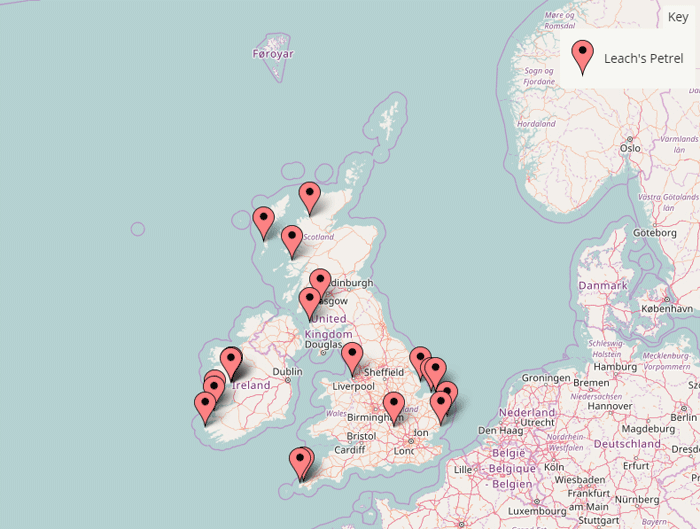
As the week began handfuls of Balearic Shearwaters for the most part were dominated by a tallies of on 29th of 23 birds from Hartland (Devon) and 35 from Pendeen (Cornwall). Otherwise duos passed Valentia Island (Co.Kerry) and Strumble Head (Pembrokeshire) on 28th with three off the latter site on 29th; elsewhere on 29th singles were off Troon (Ayrshire), Start Point (Devon) and Flamborough Head (East Yorkshire). Five were seen from Porthgwarra (Cornwall) on 30th, with one bird noted that day from the Scillonian. October kicked off with two seen from Filey (North Yorkshire) on 1st, but it was Pendeen that once again had the chunky numbers with 30 noted from there. On 2nd eight were logged in Norfolk from Happisburgh, with two noted from Sheringham and one from Weybourne; one bird was logged from Spurn YWT (East Yorkshire) on 2nd also; and singles were off Pendeen (Cornwall) and Bardsey (Gwynedd), and two were off Bawdsey (Suffolk) on 4th.
Three single Great Shearwaters were seen on 29th – two in Co.Kerry at Valentia Island and Kerry head respectively, and one off Thurlestone (Devon). A further bird was seen from the Scillonian on 1st October. A single late Cory’s Shearwater was seen from Kilcummin Head (Co.Mayo) on 29th.
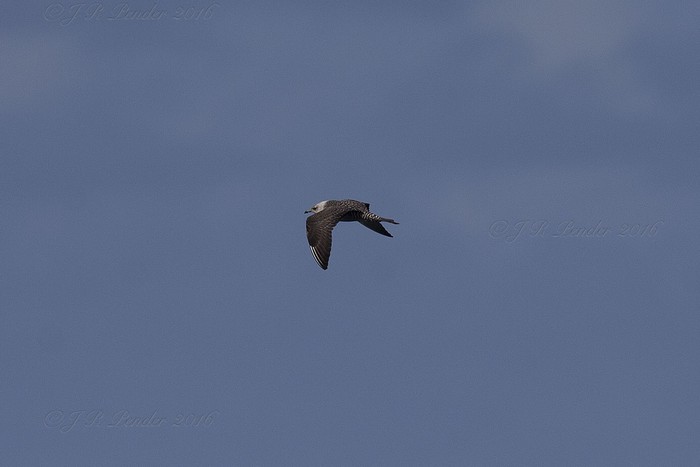
Around 50 Pomarine Skuas were logged on 29th, with a predominantly westerly bias as one might expect – exceptions to this being single birds off Flamborough head (East Yorkshire) and Sheringham (Norfolk). Double figure counts came from Bardsey (Gwynedd) and Bloody Foreland (Co.Donegal) with 11 and 17 birds noted respectively. Around 90 more birds were logged as the week unfolded from points all around the British and Irish coasts, with a notable movement along the north Kent coast on 2nd peaking with 15 birds logged off Tankerton. Also on 2nd 10 were seen at Huttoft Bank (Lincolnshire).
Long-tailed Skuas provided further skua passage pleasure, with around 70 birds noted over the course of the week off eastern and western coasts alike. Most sightings involved ones or twos in the course of the opening days of October, but seven were seen in the course of 1st from Whitburn Coastal Park (Co.Durham) and five were seen on 2nd from Tankerton (Kent). A single bird on 30th September would have been a highlight for those pioneers who’d elected to take a late Scilly pelagic.
Another solid showing this week of Glossy Ibis, with several birds lingering at their favoured locations: single birds remained at Fremington Quay (Devon) until 1st; Dundalk (Co.Louth) until 2nd; at Strumpshaw Fen RSPB (Norfolk) until 4th; at Idle Valley NR and latterly Hagg Lane Flash (Nottinghamshire) until 4th. One remained at Dungeness (Kent) at the start of the week with two birds there from 30th onwards; two were remained at Shapwick Heath NNR (Somerset) on 29th. Further singletons were noted on 28th at Horstead (Norfolk) and Daventry Reservoir CP (Northants). One was again at Fingringhoe Wick EWT (Essex) on 30th-3rd October with further Essex sightings in between at Vange Marsh RSPB on 1st and Wat Tyler CP on 2nd. One was seen on 1st in Ireland at Rogerstown Estuary (Co.Dublin).
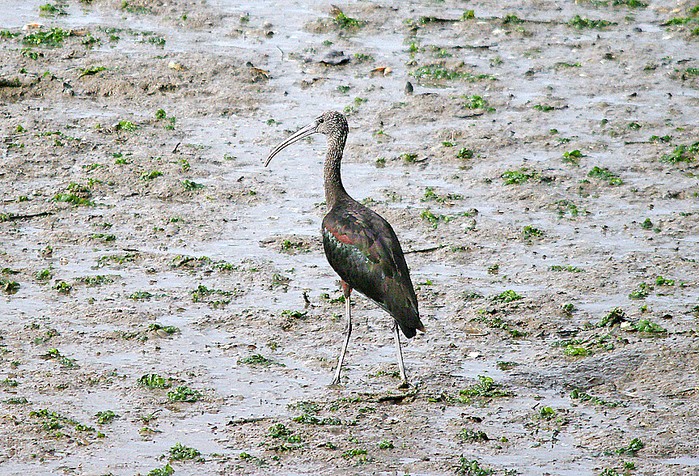
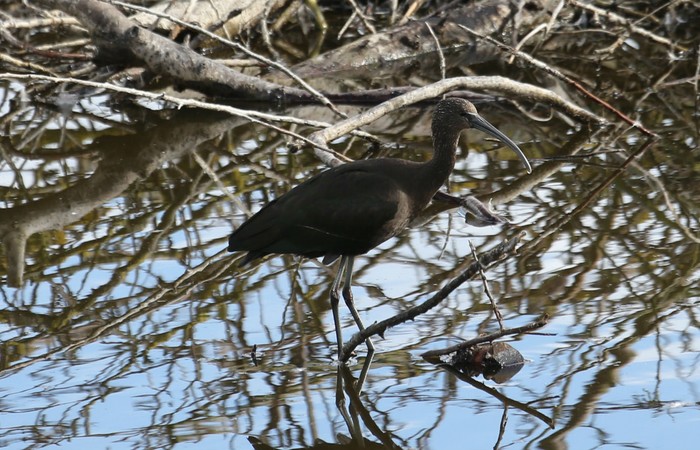
Three single Cattle Egrets rolled into the new week: birds remaining at Dungeness RSPB (Kent) and Burton Mere Wetlands RSPB (Cheshire) until 4th, and Marshside RSPB (Lancashire) until 3rd. Two were seen on St.Mary’s (Scilly) on 3rd-4th with two on the latter date also on Tresco.
Two juvenile Purple Herons were available – one at Otmoor RSPB (Oxfordshire) until 2nd October, and the other at Elmley NNR still on 29th.
Brownsea Island (Dorset) looked set to be the focal point for the week’s Spoonbill sightings with a peak count this week of 43 birds on the lagoon on 1st October. A count of elsewhere in Poole Harbour of 40 on 3rd from Arne RSPB was supplanted on 4th with a tally of 45 birds. An immature was on the Hayle Estuary (Cornwall) until 30th. An adult remaining at Slimbridge WWT (Gloucestershire) until 1st, while two remained at Titchwell (Norfolk) until 1st with four there on 4th.
Spoonbills were very much on the move as September segued into October: on 30th in Kent two were seen over Bough Beech reservoir and 11 were over Dungeness, while at Oare Marshes that day 18 birds turned up – these remained on 1st, with nine still there on 2nd. Elsewhere on 30th 18 were seen over Minsmere RSPB (Suffolk), with one noted down in Cornwall at Stithians reservoir. On 1st it was all change again, with 14 passing Bawdsey (Suffolk) and 17 at Warham Greens (Norfolk); three were noted at Gibraltar Point (Lincolnshire), while in West Sussex a dozen passed Climping with a single seen at Church Norton. A dozen were at Oxey Marsh (Hampshire) that day, with 15 noted at Stanpit Marsh (Dorset) – and just one at the latter site by 3rd. Two were in Somerset at Blagdon Lakes on 2nd, with one seen that day in London at Cross Ness. On 3rd four were in Devon at Isley Marsh RSPB, and one was at Cliffe Pools RSPB in Kent that day. On 4th one was again at Medmerry RSPB (West Sussex); while that day one was in Hampshire at Pennington Marshes and four flew over Verwood (Dorset).
The week’s Common Crane sightings came from a wide geographic scatter, starting up in Shetland where one was seen circling Sumburgh Head on 30th. Moving into October and 1st saw singletons logged on Benbecula and South Uist (Western Isles), and in East Yorkshire at Sunk Island and Easington. One over Oare Marshes NR (Kent) on 2nd was presumably the same bird seen on 3rd on the other side of the Swale at Shell Ness. Four birds were noted over North Cave Wetlands YWT (East Yorkshire) on 3rd while on 4th an adult and a juvenile passed over Portland (Dorset).
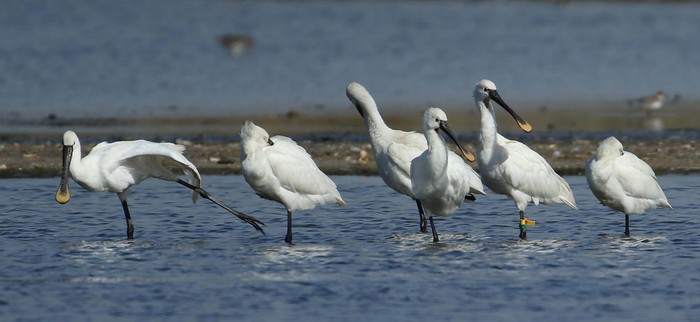
Three Corncrakes this week: one up in Unst (Shetland) at Burrafirth on 28th, one in Wales at Point of Ayr (Clwyd) on 29th, and one in Aberdeenshire on 3rd at Blackdog. Two Spotted Crakes, and adult and a juvenile, were at Neumann’s Flash (Cheshire) on 28th, with at least the adult still there on 4th. A further individual was noted on 29th in Somerset at Chew Valley Lake.
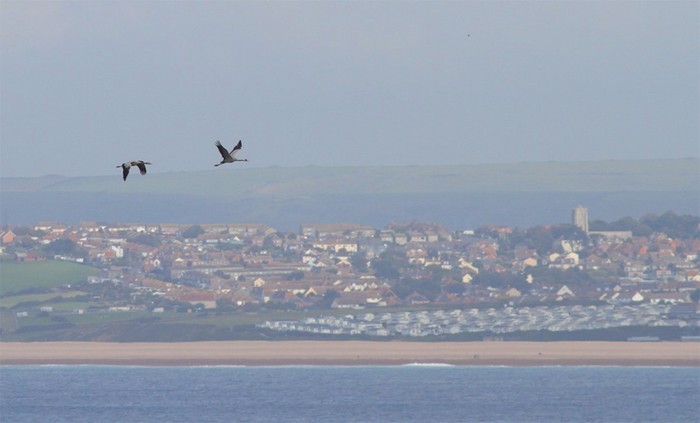
If we needed a reminder that winter was coming, apart from the usual harbingers like the return of Match of the Day and Strictly (no prizes for guessing which one of these my erstwhile Rarity Round Up colleague Mr Golley is a big fan of), it’s a Snow Goose arriving with Pink-footed Geese in Scotland – one was at Findhorn Bay (Moray) on 29th September – 4th October.
Apart from that it was deathly quiet this week in the honkers and quackers department. Have a drake Ferruginous Duck still in London on Brent Reservoir until 2nd October, a drake American Wigeon in Lancashire at Crossens Outer Marsh on 30th September, and the long-staying drake Black Duck still consorting with the local Mallards in Highland at Strontian on 30th September – 4th October and that’s pretty much your lot.
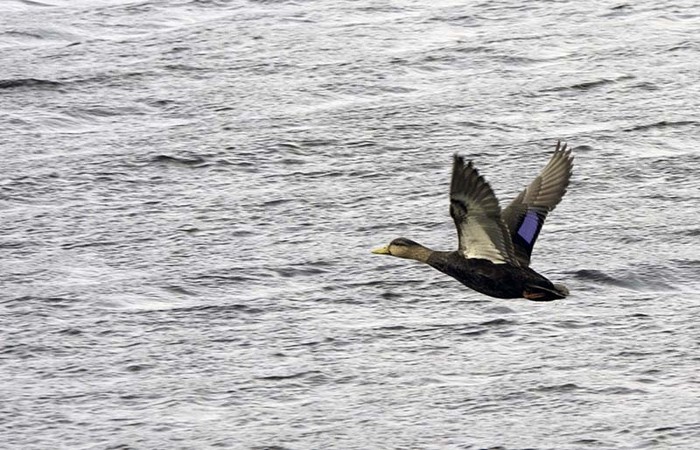
Okay, not quite. There were drake Surf Scoters, one still at Ruddon’s Point (Fife) on 30th, one off Musselburgh (Lothian) on 2nd-4th, and one in Inganess Bay on the Orkney mainland on 3rd. A superb inland record (well, as inland as anywhere in Shetland can be) was a first-winter bird on a small pool on Fetlar on 1st. Meanwhile one was seen from the traditional wintering station at Llandulas (Conwy) on 3rd, and one was on the Western Isles off South Uist at Rubha Ardvule again on 4th. And that really is the end of the week’s wildfowl.
Still, mustn’t grumble – we’ll be knee deep in Green-winged Teals before we know it, and at least this way we can rattle on towards the interesting passerines without pausing to give a Hooded Merganser a good kicking en route.
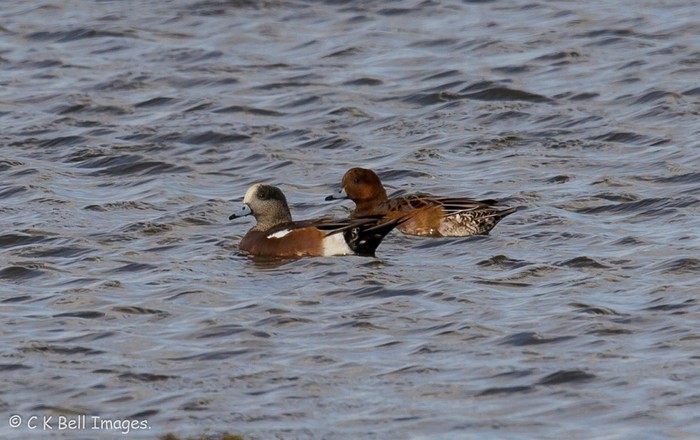
(Should we mention the Ross’s Goose reported in Lancashire on 3rd at Newton Marsh? Moving swiftly on…)
First things first though and we need to pause and probe the rich pickings that are this week’s shorebirds.
Top billing must go to Tacumshin (where else?!) with nothing less than a flock of Semipalmated Sandpipers on 29th – five birds, an adult and four juveniles. This fabulous Co.Wexford record was preceded by a single on 28th in Co.Kerry at Reenroe and one at Carrahane Strand on 29th. Numbers at Tacumshin dwindled as the days wore on, with three there on 30th, two on 1st October and one juvenile on 2nd. Another multiple arrival on 30th when a pair of juveniles were found at Vaul Bay on Tiree (Argyll), while back in Ireland another was found in Co.Wexford at Rosslare Backstrand on 1st. On 3rd one was in Co.Kerry at Blackrock Strand while a further possible bird was seen briefly in Gloucestershire that day at Northwick Warth. On 4th a juvenile was in Co.Kerry at Kilshannig.
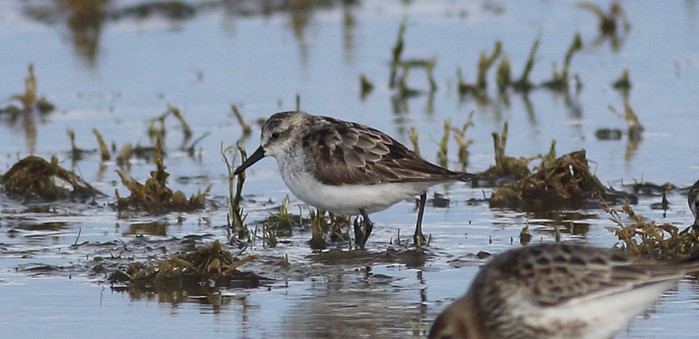
Two juvenile Baird’s Sandpipers were seen at the start of the week, with singletons of this always delightful wader at Bull Island (Co.Dublin) on 28th September – 3rd October, and on the Gannel Estuary (Cornwall) on 28th-29th. The latter bird was at times especially confiding, with views down to just a few feet away. One was on Davidstow’s short turf on 2nd-4th, while up in Northumberland one was at Boulmer on 30th- 3rd October.
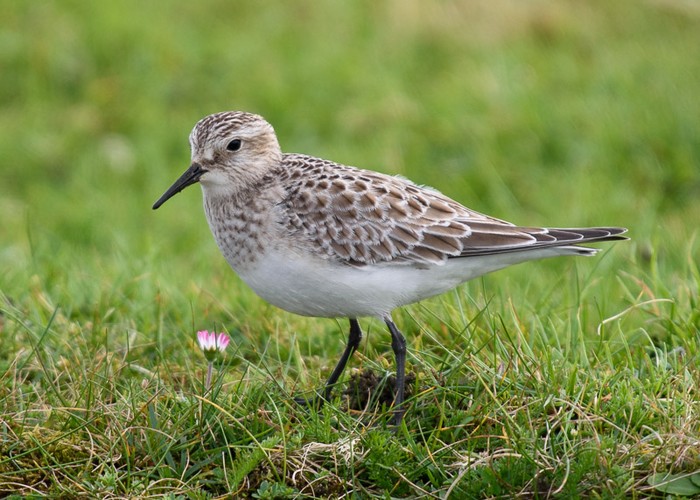
A White-rumped Sandpiper was at Ferriter’s Cove (Co.Kerry) on 29th, while one was again at Tacumshin (Co.Wexford) on 2nd October.
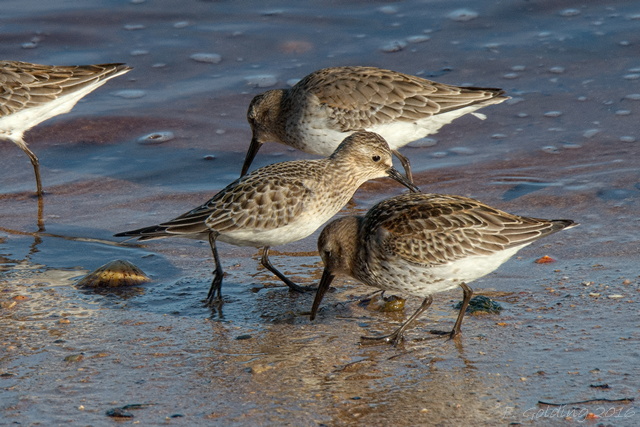
In Cornwall the adult Hudsonian Whimbrel stayed put at Perranuthnoe in Boat Cove until 4th October, while across the water on Scilly St.Mary’s enjoyed a Buff-breasted Sandpiper and American Golden Plover double on 29th September – 4th October.
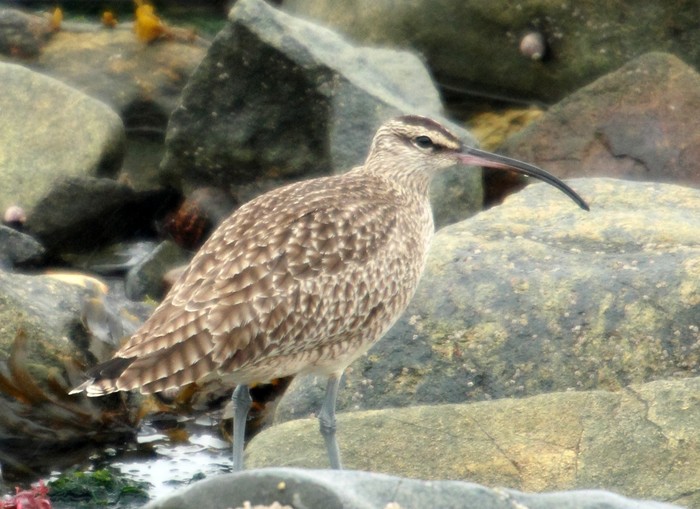
Elsewhere American Golden Plovers were seen at Cockersand Abbey (Lancashire) and Baile an Reannaigh (Co.Kerry) on 28th; and on Barra (Western Isles) on 29th September - 4th October. On 30th Argyll hosted individuals on Tiree and Islay (with the Tiree adult bird still present on 3rd October), while a juvenile was seen in Cumbria at Heversham. New birds were reported daily, with singles on 1st at Hatfield Moors (South Yorkshire) and Rue Point (Isle of Man); while on 2nd juveniles were on Sanday (Orkney), St.Mary’s Island (Northumberland) and Achill Island (Co.Mayo). On 4th one was on Shetland at Eshaness, with a juvenile in Co.Clare at Loop Head.
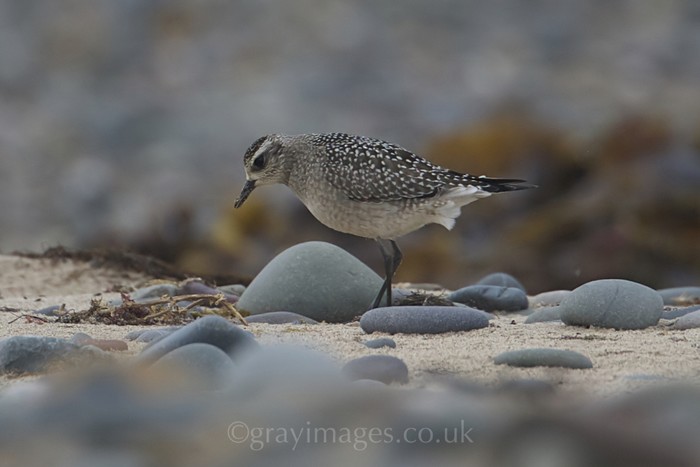
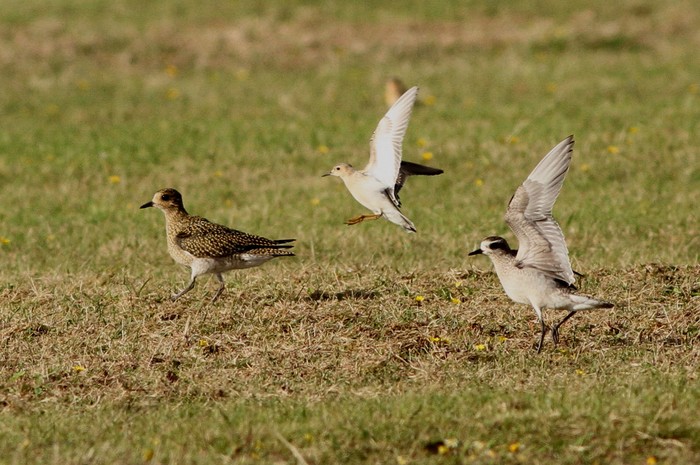
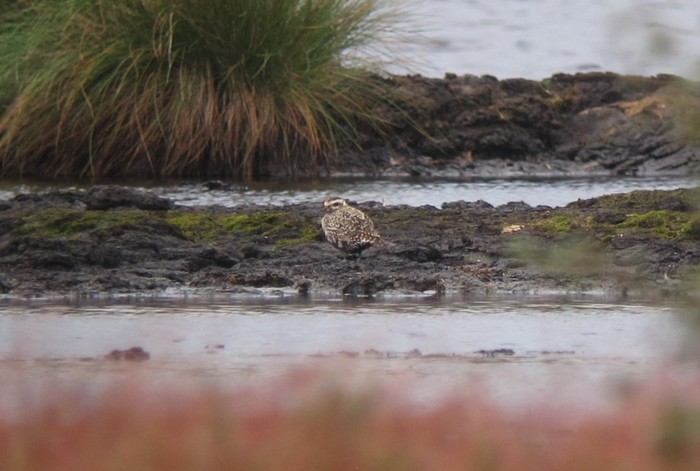
Returning briefly to Scilly, St.Agnes hosted a Lesser Yellowlegs still on 28th-29th September. Moving east, one was at Fremington Quay (Devon) still on 28th, and a further bird was in Dorset at Lytchett Bay still on 28th-4th October. One remained in Essex at The Hythe on 28th-2nd October, while up in Northumberland one was noted at Beal on 28th September.
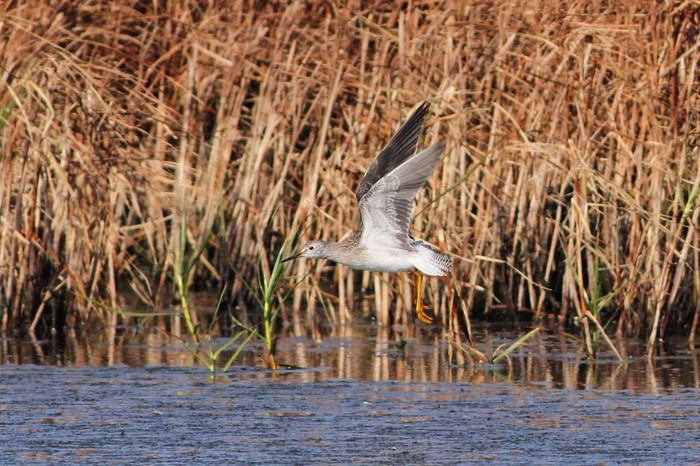
Further Buff-breasted Sandpipers this week were seen in Scotland, with three on Islay at Loch Gruinart RSPB (Argyll) a highlight on 30th; a further individual was at West Gerinish on South Uist (Western Isles) on 1st-2nd October.
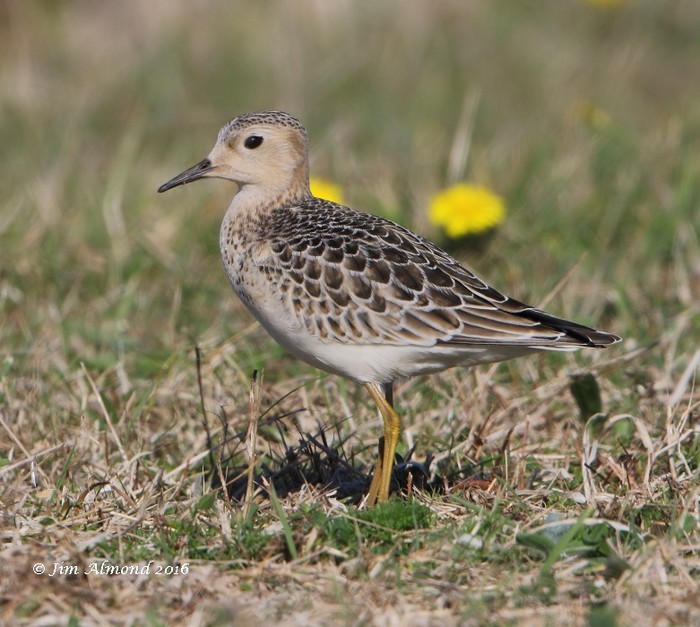
Pectoral Sandpipers pushed well into double figures with over 20 reported during the week. Two remained at Martin Mere (Lancashire) on 28th (with one still there on 4th October) with other lingerers still that day at Wood Lane NR (Shropshire), Frampton Marsh RSPB (Lincolnshire); Durleigh Reservoir (Somerset) until 29th; and at Titchwell RSPB (Norfolk) until 4th October. One was at Minsmere RSPB (Suffolk) on 28th-29th and again on 4th, with a further bird on 29th in Berkshire at the Queen Mother Reservoir, remaining there until 3rd October. On 30th three birds were at Loch Gruinart RSPB on Islay (Argyll), with individuals that day in Somerset at Durleigh reservoir and in Cornwall on the Hayle estuary.
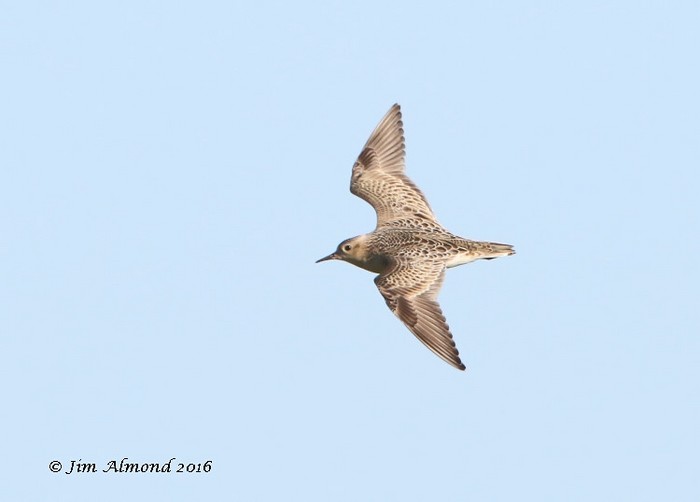
October kicked off with one still at Bardney Pits (Lincolnshire) on 1st-2nd, one at East Chevington (Northumberland) on 1st-2nd, one at Hale Cheshire on 1st; while in Ireland two were on Kinsale Marsh on 1st, with singles that day at Flaggy Shore (Co.Clare) and on Achill Island (Co.Mayo), the latter bird remaining until 2nd. On 2nd Ireland returned singles at Portmagee and on Valentia Island (Co.Kerry) with a possible reported from West Sussex at Shripney. One was on Sanday (Orkney) on 3rd. On 4th one was at Baleshare on North Uist (Western Isles), with another at Burton Mere Wetlands RSPB (Cheshire) on that day also.
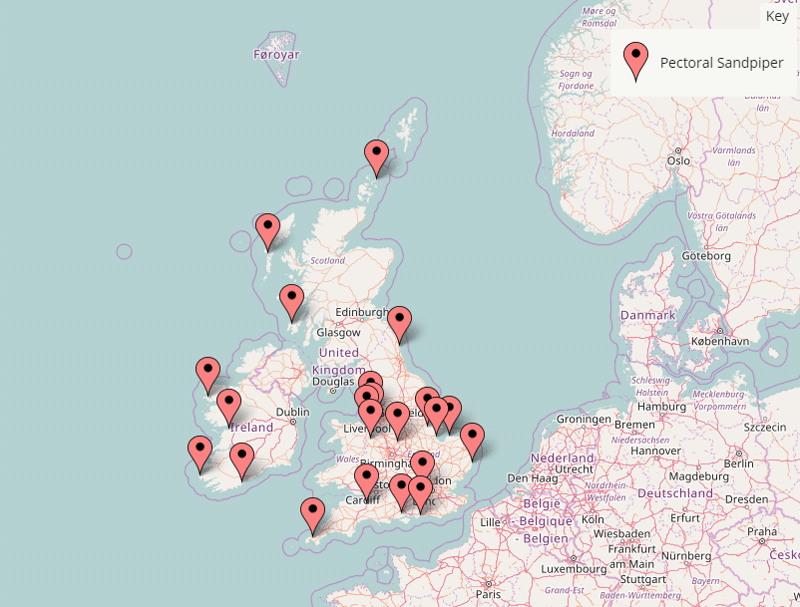
A Long-billed Dowitcher was in Lincolnshire at Frampton Marsh RSPB on 1st-4th, venturing also to Freiston Shore RSPB on 3rd.
Moving away from birds of a Nearctic persuasion, Shetland turned up a Great Snipe on Unst at Norwick on 2nd-3rd. Judging by reports of it being seen in flight this was a typically skulky bird that wasn’t giving itself up easily...
Grey Phalaropes had something of a week, unsurprisingly given the at-sea conditions in the early part of the week. Singles at Steart (Somerset) still on 28th-29th and off Valentia Island (Co.Kerry) on 28th didn’t hint much at what the 29th would deliver: 10 birds off Valentia Island, with a further 10 past Kerry Head and 10 also off Bridges of Ross (Co.Clare). Elsewhere two were seen from Strumble Head (Pembrokeshire) on 29th, with singles that day off North Ronaldsay (Orkney), Dunnet Bay (Highland) and Dunseverick (Co.Antrim). The Orcadian bird was still on Gretchen Loch on 30th, but it was Scilly that stole the day’s thunder with 50+ birds seen from a pelagic off the islands. Elsewhere singles were seen at sea from the Scillonian and the Uig-Lochmaddy ferry (Highland); and one was noted in Rhossili Bay (Glamorgan).
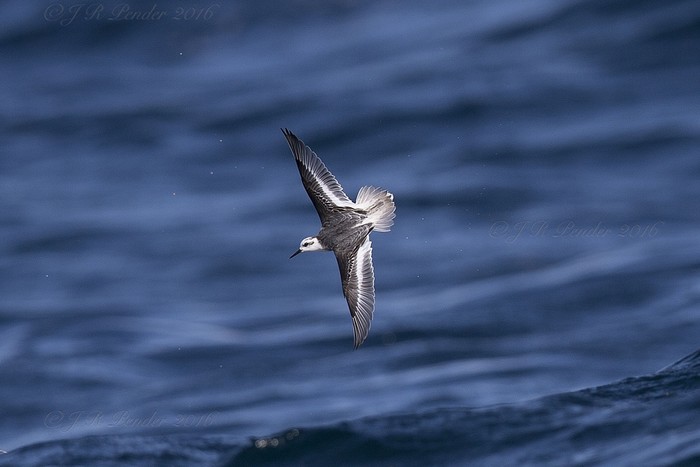
19 birds off Pendeen on 1st started the new month in some style; a single was seen that day from Rye Harbour NR (East Sussex). On 2nd singles were seen from Northam Burrows CP (Devon), Winterton Dunes NNR (Norfolk) and Huttoft Bank (Lincolnshire). Two were seen from St.Mary’s (Scilly) on 3rd, with singles that day from the Scillonian and Breydon Water RSPB (Norfolk), Kilnsea (East Yorkshire), and Steart WWT (Somerset). On 4th one showed well at Frampton Marsh RSPB (Lincolnshire) while the previous day’s bird was still in Somerset at Steart WWT.
Late Dotterels were noted on St.Mary’s (Scilly) on 28th-29th, in Co.Cork on 28th where one was heard over Long Island, and on 30th in Devon at Soar.
In a week dominated by the fall-out of some big westerly winds off the open Atlantic it’s only fitting that we start this week’s Gulls’n’Terns with my favourite gull of them all (sorry Ross’s Gulls, but your dainty dove-like charms will only get you so far) – a really good showing of Sabine’s Gulls.
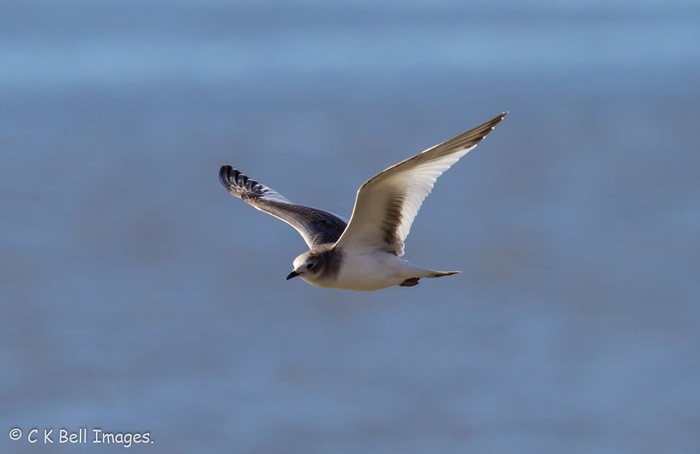
The week kicked off strongly with nine passing Bridges of Ross (Co.Clare) on 29th; a further two Irish birds passed Dunseverick (Co.Antrim) that day. Elsewhere on 29th singles were noted from Point of Ardnamurchan (Highland) and off Tiree (Argyll & Bute) in Scotland, and in England from Hest Bank (Lancashire). The last day of the month delivered further singles from Portland Harbour (Dorset) and from the stable viewing platform that’s the Scillonian.
October dawned with a decidedly Yorkshire-flavoured theme to 1st – two were off Filey, and singles were noted from Flamborough Head and Spurn. A further two were seen back in Cornwall from Pendeen. Onto 2nd October – one was off Scarborough (North Yorkshire) while in Norfolk an adult was noted from Holme and Hunstanton; two (an adult and a juvenile) passed Blakeney Point, while one arrived in Lancashire at Heysham – remaining there until 4th. On 3rd, back in Norfolk, one was seen from Sheringham while on 4th one was seen from South Gare (Cleveland).
The adult Franklin’s Gull was again seen this week in Northumberland at White Dene reservoirs on 30th September – 1st October.
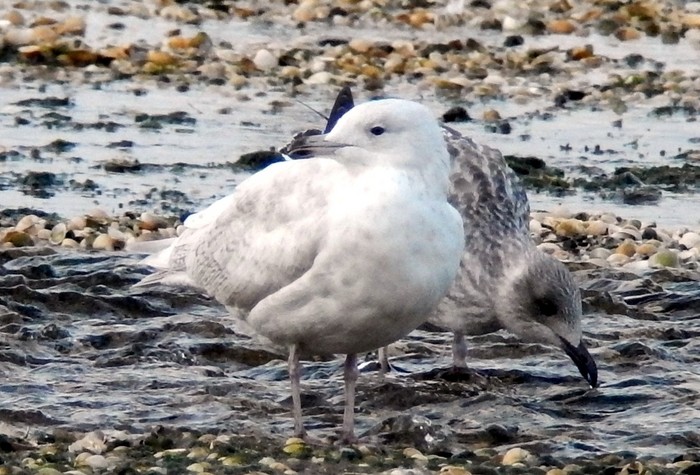
Glimpses of winter – white-wingers notwithstanding – came from Ireland this week with a small showing of Ring-billed Gulls: two adults were seen at Nimmo’s Pier (Co.Galway) and Blackrock Strand (Co.Kerry) on 30th September and 1st October respectively;with a second-winter bird at Enniskillen (Co.Fermanagh) also on 30th.
Quiet times still for Scottish white-wingers, with only a couple of Iceland Gulls to show for the week – these were an adult at Loch na Keal on Mull (Argyll & Bute) on 28th September and a second-winter bird on Tiree on 30th. Glaucous Gulls were more numerous, though that’s all relative for now – second-winter birds were in Moray at Spey Bay on 28th and Llanbryde on 30th, with juveniles seen on Lambaness on Unst (Shetland) on 1st October and at Loch Ryan (Dumfries & Galloway) on 2nd.
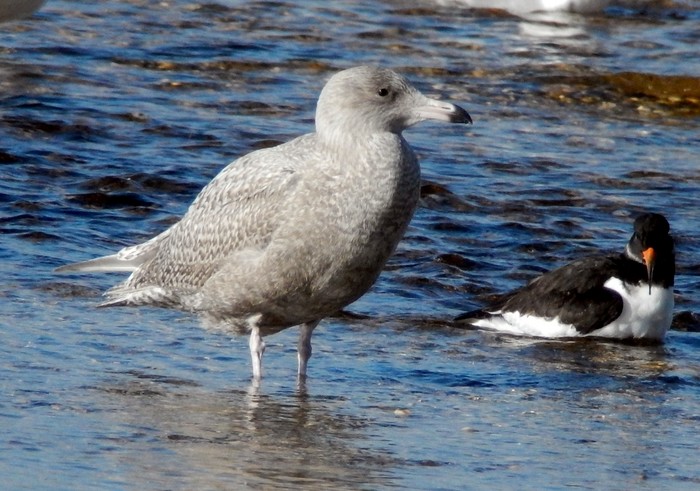
A juvenile White-winged Black Tern was at Sandsend (North Yorkshire) on 30th September, remaining there on 1st October, while in Ireland the adult Forster’s Tern was again at Soldier Point (Co.Louth) on 1st.
Is it very wrong that the sight of a Pallid Harrier on the pager or one’s phone nowadays is cause for an interested “mm-hm” rather than a strangulated “flippin’ heck!”? They’re lovely birds, these elegant harriers, but their recent upsurge in autumn numbers means they’re simply expected nowadays rather than keenly anticipated and yearned for. Not that any of us would say no to finding one, obviously! It was Kent’s turn to provide the goodies with one lingering around the Harty Marshes area of the Swale Estuary this week until 2nd. Further possible Pallids (or Montagu’s) were seen on 30th at Collieston (Aberdeenshire) and on 2nd in Suffolk at Hazlewood Marshes SWT.
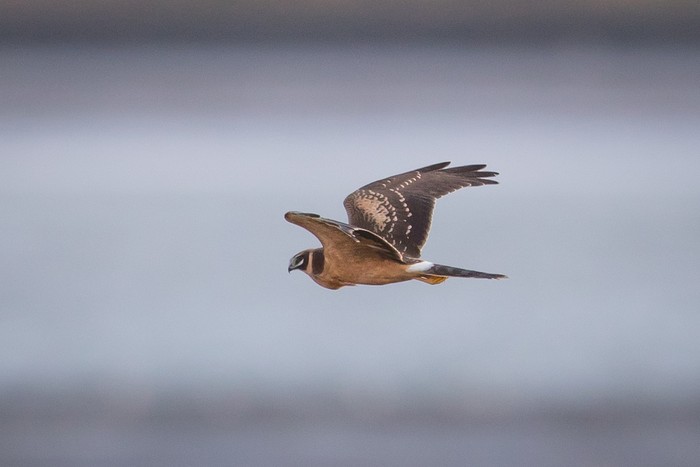
A Montagu’s Harrier was seen at East Guldeford Level (East Sussex) on 1st October.
Honey Buzzards continued to trickle through this week: singles being seen over Snape (Suffolk) on 28th; at Blakeney Harbour (Norfolk) on 29th; and on 30th September over Donna Nook (Lincolnshire), Winter Hill (Lancashire) and Langford Lowfields (Nottinghamshire). On 1st October singles were up on Unst (Shetland) and over Pitsford reservoir (Northamptonshire). On 4th one was seen in Cornwall over Carnyorth Common.
A Rough-legged Buzzard was at Brightlingsea (Essex) on 2nd.
A possible female or juvenile Red-footed Falcon remained frustratingly ephemeral at Cross Ness (London) on 2nd also.
Where to begin with the passerines? Once again, Yellow-browed Warblers had another moment this week with a massive pulse of arrivals on 2nd, but we’ll come to that in due course. For now, we need to finish off where the main thrust of our headlines began – with the Americans...
There’ve been autumns in the past when one Red-eyed Vireo was about the sum of it where American passerines were concerned over here. Not this year though, and given the standard of what’s gone before in the headlines it shouldn’t come as too much of a surprise that we were graced this week with multiple vireos.
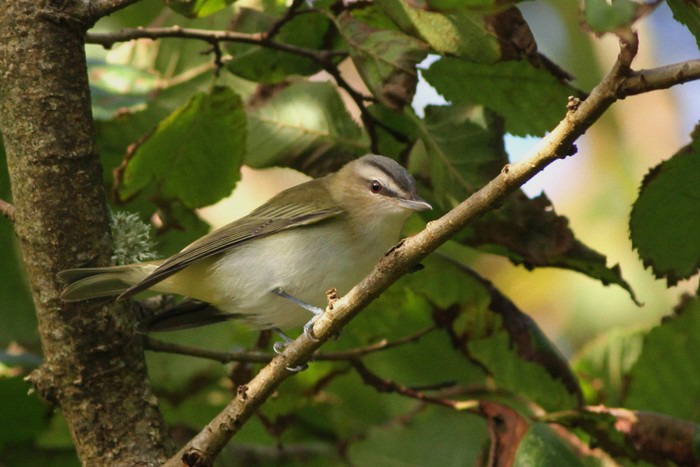
Topping the bill were two birds together on St.Agnes on 28th, reminding us that Scilly is very much still in the game when all’s said and done. At least one remained there on 2nd with a possible further bird reported from St.Martin’s on 1st. Meanwhile in Ireland single birds were on Inishbofin (Co.Galway) on 29th September – 4th October and in Co.Cork on private land at Three Castles Head on 30th; and one was at the Calf of Man (Isle of Man) on 1st-2nd.
Despite over 130 previous accepted records for Britain and Ireland to date, five or six Red-eyed Vireo would, in any other week, probably justify elevation to the headlines. But this week... well, they’re simply outgunned.
Likewise, it feels a little churlish to relegate a Swainson’s Thrush to the main body of the Rarity Round-Up, but these are the days we live in this week. Normal rules aren’t applying any more! One was found on 3rd on Fetlar up on Shetland – where else? – and remained there on 4th. There’s a good-natured rivalry between Fetlar and Whalsay here in the islands as our respective bird lists hover just north of the 300 mark – while we’ve a Veery to our credit, Fetlar’s continuing appeal to Swainson’s Thrushes remains a source of some concern... Having said that, it should probably come as absolutely no surprise to anyone that, in this week of American arrivals, a Catharus thrush of one sort or another should be found somewhere in Shetland. They’re basically annual autumn birds here of late.
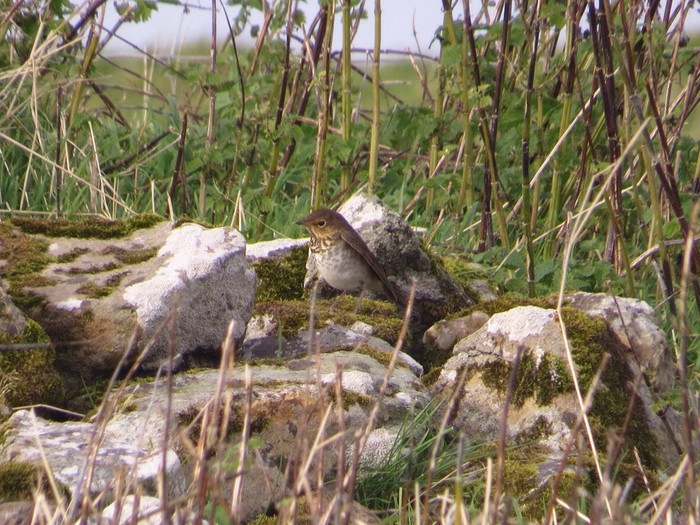
Sticking with the thrushes-in-Shetland theme, the first wafts of the really promising looking easterly windflow that’s set to dominate the coming week delivered early gifts for Shetland birders in the dying days of the week just gone – on 2nd a White’s Thrush was found in the north Mainland at Eshaness, while Out Skerries’ phenomenal week continued with a Black-throated Thrush. We enjoyed a spell of one or two of the latter overwintering now and then in the 1990s, but for the most part they’re back to being wild-eyed autumn vagrants once more nowadays – with October being the classic and best month in which to find one on the east coast. The week closed with a possible Black-throated Thrush seen in flight only at Trimingham (Norfolk) on 4th and a definite first-winter female in the plantation at Sullom (Shetland).
One species that’s very much on the up in recent years is, of course, Red-flanked Bluetail. Shetland provided two-thirds of this week’s records on 2nd October, one from Out Skerries – where else?! – and the other from birding’s perennial thoroughbred, Fair Isle. One trapped and ringed at Bamburgh (Northumberland) on 4th completed the week’s showing.
But for now, let’s throw going through the passerines species-by-species routine to one side for a moment, and pause to consider just what Fair Isle enjoyed on 2nd October. Even by that glorious island’s standards, this was an absolute peach of a day…
Imagine, if you will, what it must have been like to walk around the crofts and the geos in the company of no fewer than 72 Yellow-browed Warblers, just a smidgen short of the island’s record day-count of 76. With their sweet tsoeeet calls echoing in your ears you’d have been spoiled for choice where BB rarities were concerned: besides the aforementioned Red-flanked Bluetail there were individual Lanceolated, Radde’s, Blyth’s Reed and Arctic Warblers (and three Barred Warblers for good measure); and a fabulous comparative double of Pechora and Red-throated Pipits. All that with a supporting cast of four Red-breasted Flycatchers, three Common Rosefinches, two Bluethroats and a Short-toed Lark.
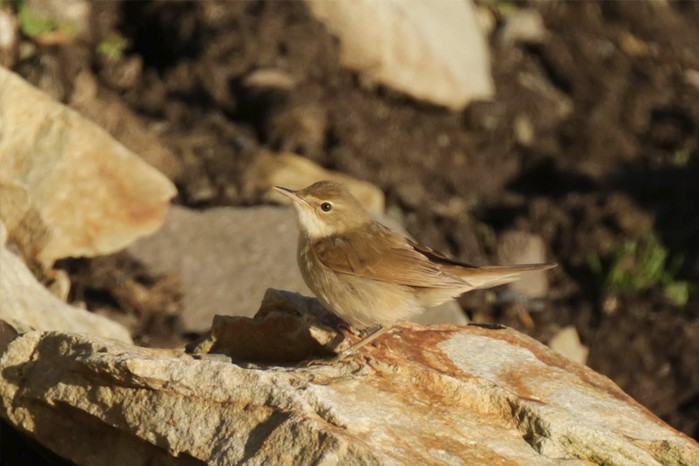
If you think that sounds a little like the closing lyrics of the “Twelve Days of Christmas”, then you’re probably not far wrong – it must have felt like Christmas had come early for those birders fortunate enough to have been on the isle at the time. It could, of course, be you too – if you’ve not stayed at the excellent Fair Isle Bird Observatory for a week or two in autumn it’s high time you booked a stay and saw for yourself just how marvellous it can be.
Returning to some semblance of order after all that excitement, we turn to Hoopoes - singles remained in Norfolk at Brancaster on 28th and in Shetland at Easter Quarff from 28th – 2nd October. Further birds were seen in Shetland on Yell at Sellafirthon 28th; one being mobbed by a Kestrel in Dorset at Hengistbury Head on 30th; and a final bird was in Ireland at Sixmilebridge (Co.Clare) on 2nd-3rd October.
A good week for Wrynecks with a decidedly southerly bias to our records – 40 birds were noted from 15 counties, with no fewer than seven birds from Cornwall alone. Duos were seen on Bardsey (Gwynedd) and on Ventnor Downs (Isle of Wight) on 2nd, with the latter pair still present on 4th.
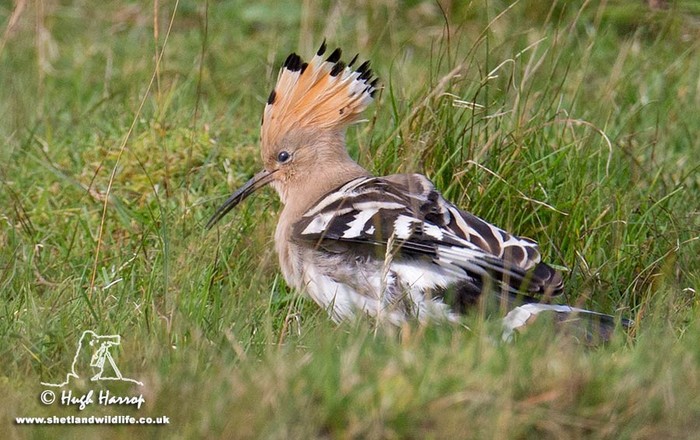
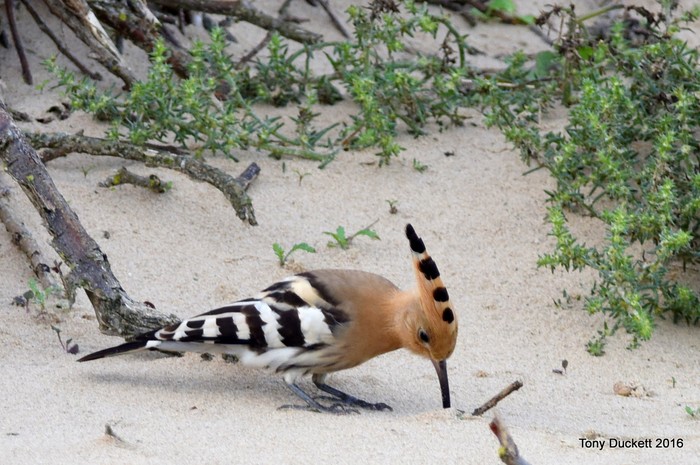
Our weekly larder of shrikes begins with the adult Lesser Grey Shrike still in Devon at Plymouth until 30th September. On 3rd October single Great Grey Shrikes were seen at Landguard NR (Suffolk) and Holme next the Sea (Norfolk); on 4th singles were at Covehithe (Suffolk), Hunstanton (Norfolk) and on Fair Isle (Shetland).
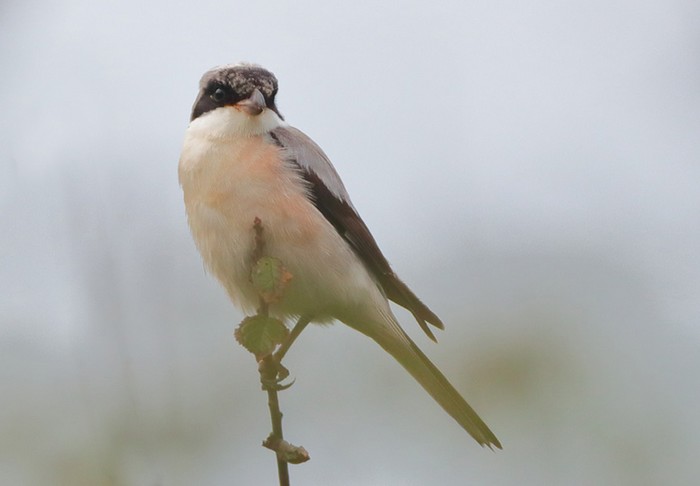
3rd October generally was a good day for shrikes – three single Woodchats were uncovered on that date: at Aveton Gifford (Devon), Whitburn (Co.Durham) and in Ireland at Rathangan (Co.Wexford). The Aveton Gifford bird remained on 4th.
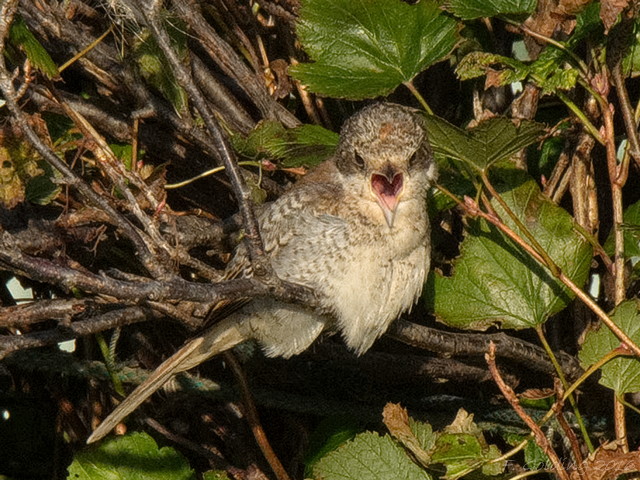
Red-backed Shrikes continued to trickle along – one was at Laxo (Shetland) until 1st October; one remained at Sands of Forvie (Aberdeenshire) until 30th September; and one stayed at Porthgwarra (Cornwall) until 2nd October. On 29th one was on Harris (Western Isles); on 1st October a bird was in the south mainland of Shetland at Ocraquoy; on 2nd-4th one was on Scilly on St.Mary’s; and on 4th individuals were noted at Waxham (Norfolk) and Cliftonville (Kent).
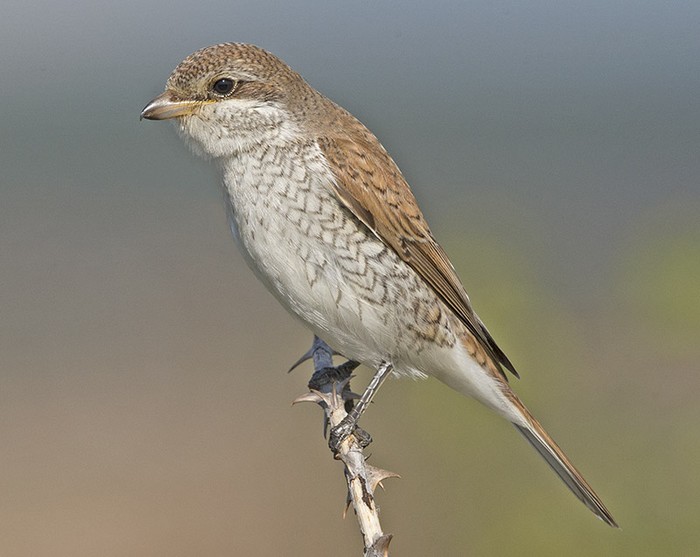
And so we come to our warbler contingent. Brace yourselves – this may take a little while…
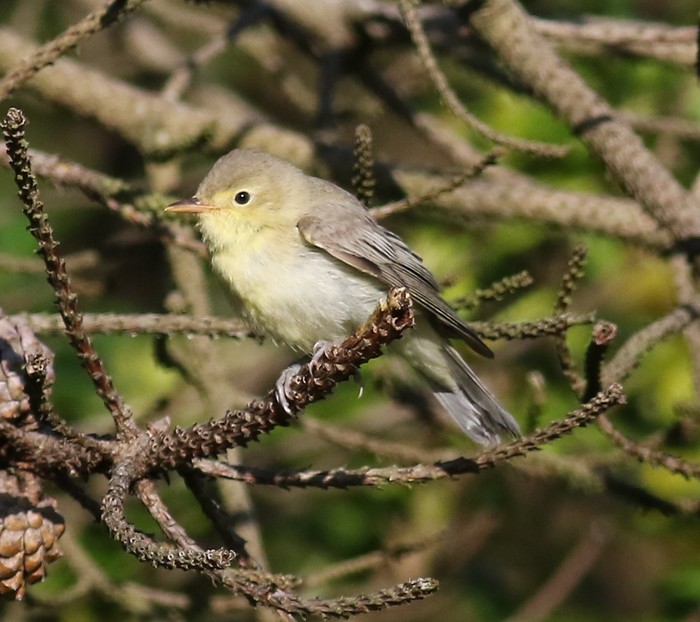
A Western Bonelli’s Warbler was again seen on St.Mary’s (Scilly) on 30th September.
Two Arctic Warblers were noted in Shetland this week – one at Frakkafield on Mainland on 28th and another on Fair Isle on 2nd October.
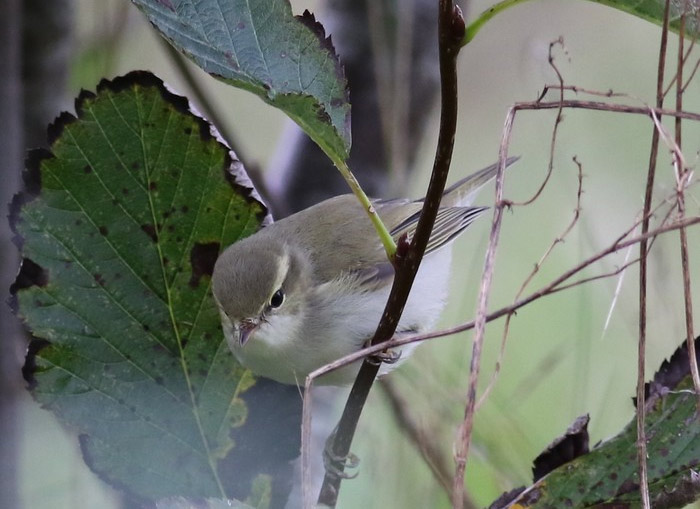
Shetland also laid claim to one of the week’s Greenish Warblers, a showy individual remaining at Aith on Mainland until 30th. The other birds were way down south in Dorset at Charmouth on 29th and in Norfolk at Wells Woods on 4th.
We’ve already touched on Fair Isle’s Lanceolated Warbler on 2nd-4th; but Shetland had another on 2nd on Mainland at Boddam – conveniently (or agonisingly) close to the airport, depending on whether you were coming or going from the islands at the time.
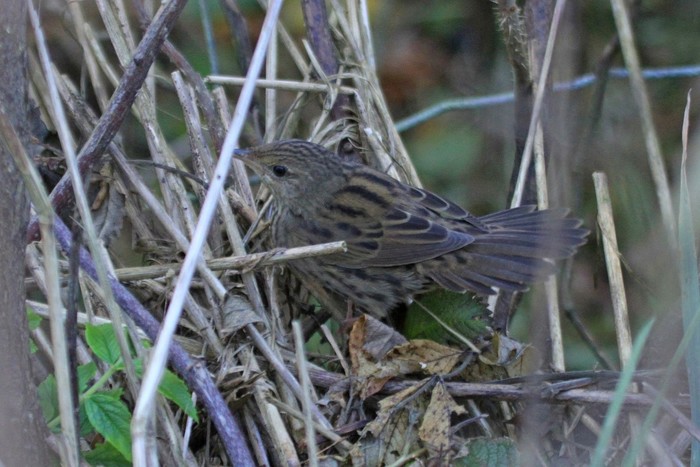
Shetland, Shetland, Shetland… it’s all about Shetland here isn’t it? Well, just for a while longer, yes it is. Two Paddyfield Warblers were, predictably, on Fair Isle on 28th-29th September and on Unst at Norwick on 2nd October.
And so to Blyth’s Reed Warblers to break the Shetland monopoly. (Just about…) The week began with birds still up there on Unst at Baliasta until 30th and Uyeasound until 29th. 30th September concluded with further individuals on Unst at Norwick and on Mainland at Sandgarth – this latter bird remaining there until 4th October. A further possible bird was on Bardsey (Gwynedd) from 30th-2nd October. Ireland got a look in on 1st with one in Co.Wexford at Hook Head. Back to Shetland then on 2nd with new birds found on Bressay and Fair Isle, and on Mainland at Levenwick and Quendale. On 4th one was at Berry Head (Devon), with another at Wester Quarff (Shetland).
So yeah, it’s mostly about Shetland this week where warblers were concerned after all. Both set to feature more in coming weeks, this week delivered a single Dusky Warbler on Unst at Burrafirth on 28th September and Radde’s Warbler on Fair Isle on 2nd October; a second Radde’s was found on 4th at Flamborough Head (East Yorkshire).
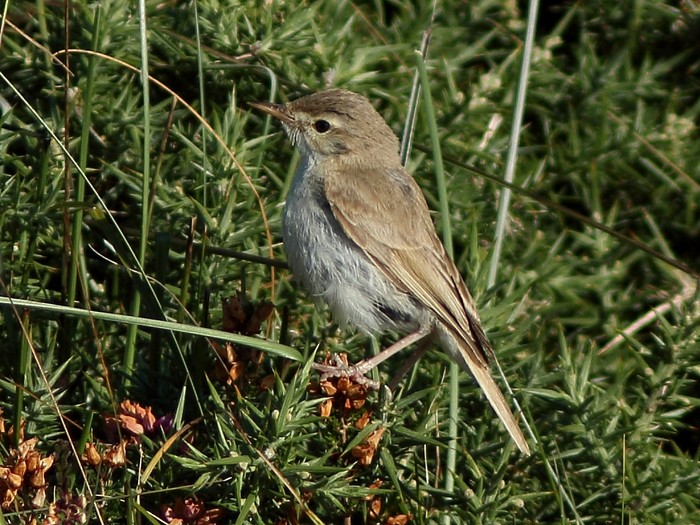
And so to Iduna… from bitter personal experience I have enormous sympathy with anyone who’s struggled to pin one of these down. It’s easy to be definitive when you’ve got a good photo on a monitor in front of you and the benefit of hindsight, but in practice these birds can be fiendishly elusive and uncooperative in dense cover. This week a bird started out on 29th at Sandgarth on the Shetland Mainland as a probable Booted but had morphed by 30th into a probable Sykes’s Warbler. Alas it was never definitively pinned down to either – a frustrating one that got away. We’ve all had them… More clear cut was a Booted Warbler found on Great Orme (Conwy) on 3rd-4th – a long-anticipated and doubtless welcome first for the county.
On the subject of indeterminate warblers, a Subalpine Warbler was on Scilly on St.Martin’s on 4th. A number of putative blythi type Lesser Whitethroats were reported this week, often on social media. Again speaking from personal experience, actually getting a photo of a spread wing or tail in the field is hellishly difficult as these warblers leap, antpitta-like, through the vegetation. One candidate, present since at least 2nd, was trapped and ringed at Skaw on Whalsay (Shetland) on 4th – in the hand the wing formula and outer tail tail feathers seemed to confirm the field identification as a blythi. Another probable candidate was trapped and ringed on 4th at Whitburn Coastal Park (Co.Durham).
No doubt whatsoever about Pallas’s Warblers - or at least, not for now… Singles were found on 4th on Fetlar (Shetland) and Flamborough (East Yorkshire). Again, one would hope there will be plenty more in the weeks to come.
Reasonable numbers of Barred Warblers continued to filter through with 17 noted during the course of the week. 11 of these were in Orkney and Shetland, revealing a firm though not exclusive northerly bias – singles on Ramsey Island (Pembrokeshire) on 28th September – 2nd October and Hook Head (Co.Wexford) on 1st-2nd showed that a few were filtering through to the west.
And so we come to Yellow-browed Warblers. There’ll come a time in years hopefully not too far away (said with some feeling) when these will be so passé and normal that we’ll have stopped trying to make sense of their numbers. There were A LOT of them again this week. Really, tons of them. As one of my birding companions remarked earlier on Tuesday afternoon, it comes to something when there are more Yellow-browed Warblers than Chiffchaffs…
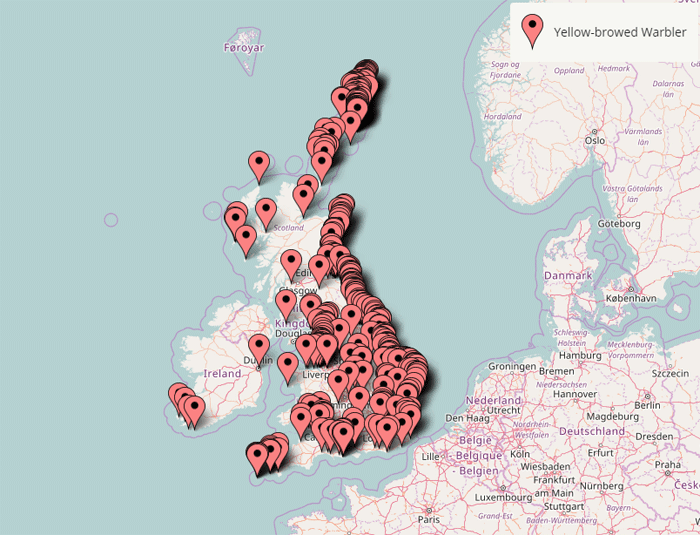
Mind you, we have big news where Yellow-browed Warblers are concerned. Skye and Lochalsh scored their first ever record on 4th, a single bird at Broadford – behind the post office, in case you were wondering.
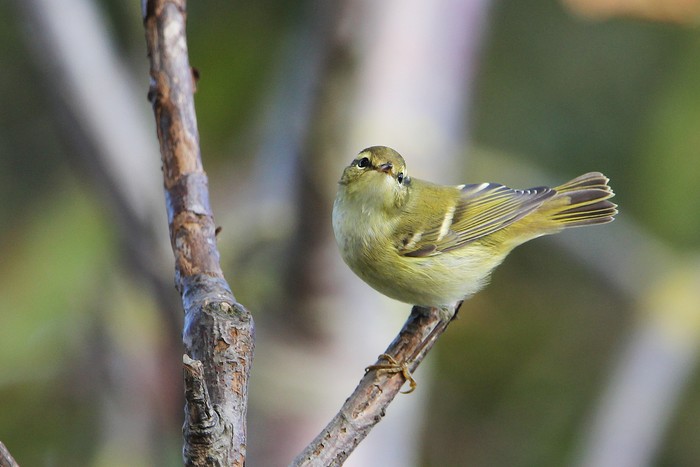
This news aside, I’ll take a wild stab in the dark as to how many there were across the region this week – at the very least, from those reported we’d have to assume there were some 1,500. Inevitably a gross underestimate, there were birds found in incredible numbers (Sanday in Orkney enjoyed 86 on 2nd), inland (for example in Warwickshire at Duke End on 1st) and even in London – one was in Regent’s Park on 30th September. How may were missed? Thousands, surely. Were this a one-off event it would be remarkable, but it’s happening every year now. Something seismic is happening in the world of Yellow-browed Warblers.
October’s first Siberian Stonechat arrived bang on cue on 4th at Flamborough Head (East Yorkshire). More to follow, surely…
No week at this time of year can be complete without a bevy of Red-breasted Flycatchers - everyone’s checking for Taiga, yes? – and this week was no exception. 27 birds were logged, mirroring Barred Warblers with a northerly distribution – 17 of them were in Shetland alone. We’ve already heard about Fair Isle’s four on 2nd, but Kergord on the Shetland Mainland hosted two on 29th September. Birds penetrated south and west, with singletons seen on Lundy (Devon) on 1st and St.Mary’s (Scilly) on 3rd.
Bluethroats are much scarcer nowadays than hitherto – once a spring and autumn staple they’re much thinner on the ground in recent years. Ten seen this week represents a good showing on recent standards. Away from Fair Isle’s double on 2nd single birds were noted at Laxo (Shetland) on 28th September – 1st October; on Fetlar (Shetland) on 30th September – 1st October; HAroldswick on Unst (Shetland) on 30th September – 2nd October; on Tresco (Scilly) on 1st October; and on 3rd at Easter Quarff and Out Skerries (Shetland), North Ronaldsay (Orkney) and St.Mary’s (Scilly). The Skerries bird was still present on 4th.
An Olive-backed Pipit was on Shetland at Ollaberry on 3rd, with another on Fair Isle on 4th. We can expect plenty more of these in the next week or two…
While the Pechora on Fair Isle remained present on 4th, Shetland wasn’t having it all its own way where pipits were concerned this week, as Scilly came back on 4th with a Blyth’s Pipit on St.Mary’s. After the first for Scilly back in 1993 there’ve been six subsequent records, all since 2005 - they’re almost coming to being expected nowadays…
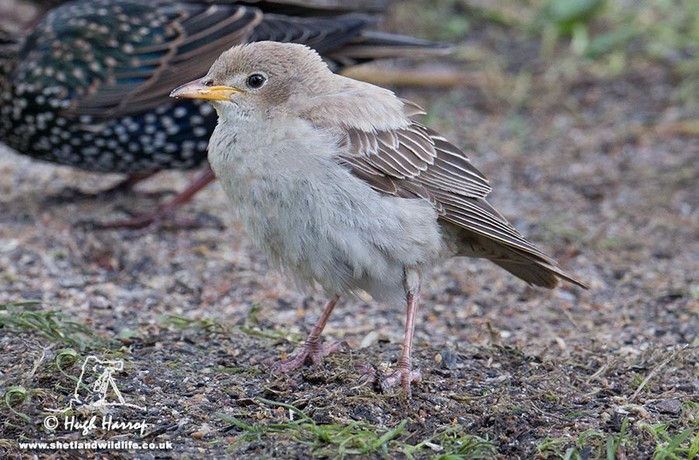
Richard’s Pipits were seen on 28th September still at Sennen (Cornwall); on Fair Isle on 29th September – 4th October (with two there on 3rd); at Spurn (East Yorkshire) on 30th; at Calf of Man (Isle of Man) on 1st, with two on 1st-3rd at Holme (Norfolk); at Flamborough Head (East Yorkshire) on 3rd; and on Sanday (Orkney) on 4th.
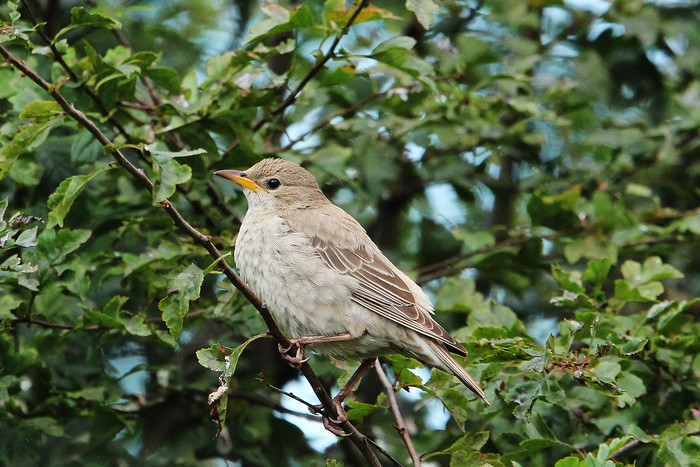
A good showing of Rose-coloured Starlings were seen this week, mostly comprising lingering individuals: birds remained Ynyslas (Ceredigion) on 28th September; at Gwithian (Cornwall) and Portland (Dorset) until 29th; at Roseden (Northumberland) until 1st October; and at Scalloway (Shetland) until 4th. A further individual was at Aberavon (Glamorgan) on 29th September – 2nd October. On 4th one was in Cornwall at St.Just, and others were seen in Holt (Norfolk) and Holmpton (East Yorkshire).
A Short-toed Lark was on Fair Isle all week long.
Hornemannii Arctic Redpolls are a traditional staple of October on Unst (Shetland), and this week was no exception: singles were seen on 30th September at Norwick, on 2nd and 4th October at Baltasound.
A Serin was at Porthgwarra (Cornwall) on 28th September; it or another was at St.Levan on 30th.
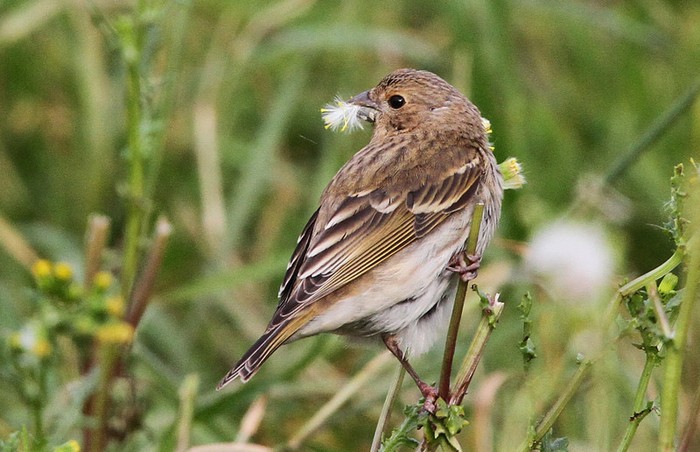
There was a predictably Shetland lean to this week’s records of Common Rosefinch - one remained on Fair Isle on 28th September, soon of course to be augmented on 2nd October; elsewhere in the archipelago birds were on Fetlar on 28th, at Sandgarth on 29th, at Norwick on 29th – 2nd, and at Ocraquoy and on Whalsay on 1st. Away from Shetland birds were seen on St.Mary’s (Scilly) on 28th and Bryher (Scilly) on 29th-4th; on Barra (Western Isles) on 29th; and on Inner Farne (Northumberland) on 3rd. On 4th one was in Ireland on Inishbofin (Co.Galway).
Two Ortolan Buntings were recorded in recent days – one in Orkney on North Ronaldsay on 28th September, and another from Morgan’s Hill (Wiltshire) on 30th.
Little Buntings are another autumn northern isles staple. Whalsay (Shetland) kicked off the week with two birds on 28th; elsewhere that day birds were present on Fair Isle and Unst – with three birds present on the latter island. On 29th-30th one was in Scalloway. One remained on Unst at Norwick until 3rd October. Meanwhile on Out Skerries one was seen on 3rd. The rest of the country began to get a look in on 2nd with one in Norfolk at Burnham Overy; thereafter birds were seen on 3rd at Flamborough Head and Kilnsea (East Yorkshire) and Pendeen (Cornwall). On 4th two birds were seen on Northumberland’s Farne Islands, with singles at Donna Nook (Lincolnshire); Kilnsea (East Yorkshire); Levenwick and Quendale (Shetland); Scarborough (North Yorkshire); and Sheringham (Norfolk).
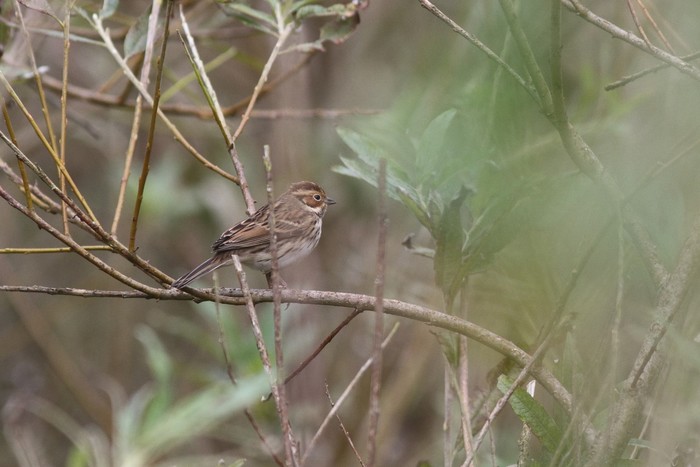
I really, really love October. If October was a girl, I’d write her name all over my pencil-case. Is there any more exciting month in the British and Irish birding calendar? It’s the time when anything seems possible, though in this year of startling rarities the coming month may need to pull out all the stops to surprise us.
You wouldn’t bet against the coming week to do just that, either. A week with the pedigree of this one is a dead cert to be packed to the gunwales with superb birds – and very probably something eye-wateringly rare.
But from which point of the compass will it come? Both east and west have form and, while we’d reasonably be hoping for the charismatic likes of White’s Thrush and Red-eyed Vireo , it’s the ultras that, were they to repeat, would really quicken the pulse.
It’s been almost thirty years since our first and last Wood Thrush, seen on 7th October 1987 on St.Agnes (Scilly). With the upsurge of American passerine records in recent years from northern and western Scotland, one might anticipate the next record, if it comes, being north of the border...
Sticking with the westerly origins theme, we’re knocking on the door of the anniversary of the discovery of Norfolk’s popular Red-breasted Nuthatch, found in Holkham Pines on 13th October 1989 – another that would be warmly welcomed were it to reoccur.
Casting our eyes enviously eastwards, it’s all gone quiet on the Yellow-browed Bunting front since a small flurry of activity in the 1990s – a decade that accounted for no fewer than three of Britain’s five records to date, including a spectacular spring record on Orkney in May 1998 – and that was our last record of the species. All other records were autumnal, coming between 22nd September and 23rd October from as far west as Scilly, on the east coast in Norfolk, and up north into Shetland. We’re currently in the right time zone and one could be almost anywhere...
But let’s be realistic. Or at least, semi-realistic! The coming week is bang in the heart of what our previous three records suggest is Rufous-tailed Robin time. Our first was on Fair Isle (Shetland) on 23rd October 2004, and our second was found dead on North Ronaldsay (Orkney) on 2nd October 2010. Sandwiched neatly in the middle, and giving hope to all mainland birders was the third and final bird at Warham Greens (Norfolk) on 14th October 2011.
Given some favourable easterly winds next week – or indeed a previous arrival coming out of the woodwork – and we could be on for a much-anticipated fourth record. Though the Siberian Accentor currently in Finland is an enticing prospect!
Here’s hoping...
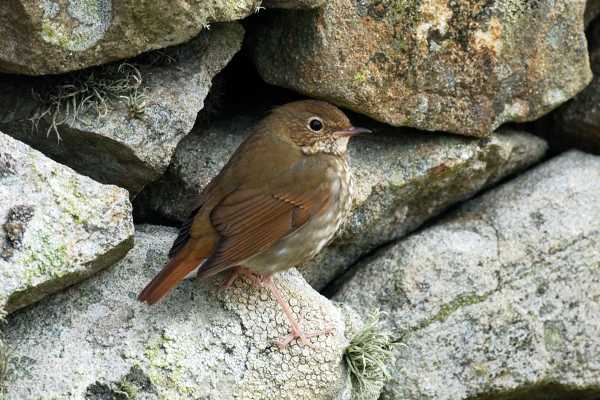
Jon Dunn
5 October 2016
